To run the forums, host the website, and travel, I charge a universal service fee for my reviews. This in-depth review was sponsored by Trek. My goal is to be transparent and unbiased with you, this video and writeup are not meant to be an endorsement of Trek products. I welcome your corrections, additions, and feedback in the comments below and the Trek electric bike forums.
Observations:
- The Trek Allant+ models replace the older Trek Dual Sport+, which was a hardtail hybrid ebike designed for use in city and light trail environments. The frame is purpose-built with internally routed cables and an arched hydroformed top tube that looks beautiful
- The Allant+ 7 Lowstep is not compatible with the optional Bosch Range Boost battery pack… so if you plan on using this ebike for long range trekking or touring and know that you want a second pack to double battery capacity, consider the Diamond (high-step) frame or look at other trek models like the Allant+ 7S which is a speed pedelec available in the United States, which comes in a staggered mid-step design and is compatible with Range Boost
- Trek is one of the “Big Three” bicycle manufacturers along with Giant and Specialized. Trek started out in 1975 making hand-brazed steel frames, and since then they have grown into a global powerhouse in the cycling industry with distributors in 90 different countries and hundreds of dealers which assemble and support the products. There are more frame size options with each model here than with many other brands
- You might notice the Bontrager name on a lot of components in this review, Bontrager is Trek’s in-house component brand and is therefore common on many of Trek’s electric bikes
Pros:
- A sporty, comfortable, all-purpose electric bike with slightly wider all-terrain tires, highly adjustable spring suspension fork, and capable 180mm Shimano hydraulic disc brakes. The Allant+ models replace the older Dual Sport+ models from Trek
- Higher quality included fenders, rear rack, and integrated lights make this an excellent choice for commuters. Optional second battery pack (for the high-step frame only) make this a good choice for trekking or touring
- The fenders are fairly nice, black support arms blend in with the color scheme of the frame (black chainring protector, black suspension fork with anodized stanchions, black spokes, hubs etc.), they are wide enough and long enough to provide good coverage in wet conditions, they didn’t rattle much (but occasionally a little rock would get flicked up and click around), and they will be lighter and more durable than steel or aluminum alloy
- The rear rack is fairly narrow and almost looks like it’s free-standing, but there’s a sturdy metal piece that hides under the fender and connects to the seat stay arch. This rack uses standard gauge tubing, so it will be compatible with more accessories. It has bungee loops at the base of the main support arms, it’s compatible with Racktime slide accessories, and it’s rated up to 25kg 55lbs which is great
- The front fender is connected directly to the suspension fork lowers vs. plastic cuffs like on many other ebikes. This upgraded fork with direct mounts means your fender won’t get bumped out of position as easily, and you won’t hear it rubbing on the tire nubs
- Trek has this ABC safety campaign of “always on, biomotion, contrast” which you can see in the silver paint accents, reflective tires, and integrated lights. The headlight is mounted to the base of the steer tube vs. the arch of the suspension, so it’s sprung and won’t bounce around but it still points where you steer. Both the headlight and rear light are extra bright and have side windows to keep you visible from more angles. The headlight has a mirror design inside that keeps light pointing down at the road/trail vs. up into the eyes of oncoming traffic/cyclists. The bike also comes with a flick bell that seemed like it would last
- The Allant+ 7 comes in three frame sizes for both step-thru and high-step models! This provides a great range of fit options, and they scale the stem and crank arms to each frame. Since Trek has lots of dealers, you can actually go in and find the perfect size for the best ride experience
- Both the high-step and step-thru models have bottle cage bosses, though the high-step has two and the step-thru only has one. I appreciate the positioning of the bottle mount on the step-thru because it’s far up the top tube and out of the way
- Great kickstand position, it’s far back, clear of the left crank arm so you won’t get heel strikes when pedaling. It’s also positioned directly below the rack to support heavier loads
- The Allant+ 7 uses a 31.6mm seat post, which is fairly wide. This provides strength and many possibilities for seat post droppers and suspension posts. This is a good consideration for people with back, neck, and shoulder sensitivity, or if you ride frequently and over long distances
- I like most of the accessories that Trek chose here, the locking ergonomic grips, highly adjustable suspension fork (with lockout, preload, and rebound adjust), the saddle, and the extra large plastic platform pedals
- The tapered headtube and 15mm thru-axle are sturdy, more trail-capable hardware, and it means you could upgrade to an even nicer air suspension fork someday if you wished vs. a straight 1-1/8″ with a 9mm quick release axle
- Great rims and tire choice, I think this is one area where Trek saved weight on the bike. Notice the width of the Alexrims and how they have 32 spokes vs. 36. These are higher quality double-wall rims that support the slightly wider 2.25″ wide Schwalbe G-One tires that have an “all around” puncture resistant casing. By choosing a 27.5″ diameter wheel vs. 26″ they are offering a smoother ride over bumps due to lower attack angle and more cushion because of increased air volume
- Trek designed a battery system called RIB (removable integrated battery) that is basically a shield with a handle that is screwed onto the Bosch PowerTube battery pack. This RIB system is easy to remove from the right side of the frame and safer to carry around. You can charge the battery on or off the bike, and you can charge two batteries simultaneously if you get the optional Bosch Range Boost battery… both packs drain simultaneously as well, so you won’t over-cycle one pack with shorter rides
- I consider this ebike to be fairly lightweight at ~47lbs, especially considering the rack, fenders, and lights that come standard. However, you can reduce the weight of the bike by another 7.1lbs by removing the battery pack. This is a great approach for lifting the bike or transporting it on car racks. I have been taught that storing the bike at half full and away from extreme heat is best for the lithium-ion cells. Extreme cold will temporarily stunt the battery, and limit range, but isn’t as damaging as extreme heat
- The battery pack locks into the frame using an ABUS core with PLUS keys that can be matched to ABUS locks, it’s a great setup and one of the highest-end locksets around, more info on the official ABUS website
- Trek chose the 4 amp Bosch charger for faster turnaround time, which is especially relevant for people who opt into the second battery pack for the high-step. The charger is relatively lightweight, compact, and can fill the battery on or off the frame without the need for any dongles. The proprietary plug interface is durable and won’t get confused with other charging devices you might own… it’s my favorite charger!
- Compared to the equally-priced 2019 Trek Dual Sport+, the motor is massively upgraded. The Allant+ 7 uses the top-of-the-line Bosch Performance Line CX, which offers up to 75 newton meters of torque. It’s going to spend battery power faster than the standard Performance Line or Active Line motors, but it’s very satisfying and trail capable for starting and climbing
- The Bosch Performance Line CX motor has gotten a lot smaller and lighter than the fourth generation, weighing 2.5lbs less than Gen 3. I like how Trek has added a vented aluminum alloy skid plate below, to reduce damage if you hit a rock or log
- The Bosch electric bike motor controller measures rear wheel speed, pedal cadence, and pedal torque over 1,000 times per second and is one of the more reliable and reputable ebike drive systems around. Bosch has partnered with Magura in North America to provide great customer support if issues arise
- Trek, Shimano, and Bosch probably worked together so that the rear wheel speed sensor could be mounted to the disc brake rotor mount vs. the wheel spoke. This means the sensor will be more durable and read with more accuracy over time. It won’t imbalance the wheel or make one spoke loose over time… it’s a great little upgrade
- With the compact motor and internally mounted Bosch Powertube battery pack, this ebike is fairly stealthy. It doesn’t stand out, the cables are mostly internally routed and the ebike system weight is kept low and center for better handling
- The Bosch Purion display panel is compact and intuitive, but it still provides dynamic range readouts, which can help reduce range anxiety on longer bike rides. Just hold the – key to cycle from trip distance, total distance, assist level, and then range. I like how small the Bosch Purion is, and how simple it is to use with power, +, -, and walk mode on the base. This display leaves plenty of room on the handlebars to mount your phone or use one of Trek’s Blendr stem mounts for additional lights, cycle computers, Garmin devices, or your smartphone
- All of the Gen 4 Bosch Performance Line motors now offer 120+ RPM pedal support, meaning that the motor can keep up with greater than 120 pedal strokes per minute, so you won’t be left without power when downshifting and spinning approaching a steep hill
- I love the 9-speed drivetrain setup here, with a wide 11-36 tooth spread and reliable Shimano Alivio derailleur. Notice the custom aluminum alloy derailleur guard that Trek has designed! This will reduce damage from sticks, rocks, and bike tips
- The steel chainring is designed with a narrow-wide tooth pattern that locks the chain more securely to prevent drops. To protect the chain and keep your pants clean, they’ve added an aluminum alloy guard to the outside of the chainring and the’ve added a clear plastic slap guard to the right chainstay to keep the paint looking nice
- Trek chose one of my favorite trigger shifter setups for this bike, the high shifter paddle can be pushed or pulled so you can use your index finger or thumb, and the low shifter paddle can be pressed through three gears to “dump” a bunch of gears going into a big climb
- Since the Bosch motor controller offers shift detection, the drivetrain should hold up longer between tuneups, and your chain and sprockets won’t wear as much. It’s not a perfect system, you can still mash gears, but shift detection certainly helps… I usually ease off when shifting gears, to reduce drivetrain pressure
Cons:
- Only the high-step frame is compatible with the optional Bosch Range Boost second battery pack, if you get the step-thru, you’ll be limited to 500 watt hours with the internal Bosch PowerTube battery
- Only the high-step frame has two bottle cage bosses, the step-thru only has one… but the positioning is very good, near the head tube on the top tube which means it won’t get in the way as you stand over the frame
- Despite being lighter and more compact than the third generation of Bosch Motors, the 4th generation still produces noticeable sound during operation. This is especially true in higher levels of assist and at higher pedal cadence rates
- The Bosch Performance Line motors have a larger q-factor than competing mid-drive units from Shimano, Yamaha, and Brose. The width is 175mm and that spaces the crank arms out a bit further… not that big of a deal, but worth mentioning because a standard analog bicycle q-factor is 145mm to 157mm on road, city, and gravel bikes
- Part of me really likes the Trek designed Removable Integrated Battery RIB casing design because of the built-in handle and right-side removability from the frame, but I dislike that it adds roughly 1.3lbs to the battery, that the shield is color-matched to the bike (making it less attractive to swap between other Trek models if you own multiple bikes), that the locking core is positioned on the left side of the frame vs. the right, and that the key must be used to mount the battery vs. simply pushing hard on the case to click it into the frame
- Neither wheel is setup with quick release, you’ll need a 5mm and 6mm hex key wrench to get both wheels off. You could always swap the hardware for quick release, and benefits include increased security and decreased weight… but it’s less convenient for trail maintenance and requires two tools on hand vs. just one size hex key
- The Bosch Purion display panel is compact and provides plenty of space for accessories, but it isn’t removable, and doesn’t show power output, avg speed, max speed, trip time, clock or shift recommendation. It also uses a 5-bar battery infographic representing 20% steps vs. 10 bars or an actual percentage readout for more precision… at least it does show a dynamic range estimate
- Given the high capacity battery pack (and optional second pack for the high-step frame), it would be nice to have a USB port to plug a phone in for use with GPS, music, or other portable electronics… the Bosch Purion display panel has a Micro USB port, but this is only usable for data transfer and updates, not charging. Consider swapping the display for a Bosch Intuvia, Kiox, or the COBI Smartphone Hub system which do have active Micro USB charging ports, dealers can help with this for a hardware and service fee
- The location of the battery charging port is very low on the left side of the seat tube, pretty close to the left crank arm. When plugged in, the charging cable actually blocks the rotation path of the left crank, so be careful not to bump the pedals, or consider charging the battery off the bike. It would be easier and safer to have the charging port up high on the right side of the bike
- This is a minor thing, but the chainring doesn’t cycle backwards when you backpedal, this changes how drivetrain service is done… you basically need a bike maintenance stand or a friend to lift the bike and pedal to clean and lubricate the chain (absolutely make sure the bike is powered off when doing this!). One positive note here, is that Bosch has setup the bottom bracket with some resistance so the cranks won’t spin as freely backwards, which could lead to more shin scrapes and shin bumps otherwise
- As with any premium electric bike with name brand components and a leading drive system that is custom-integrated into the frame, this ebike costs more money, but at least it is sold through a vast network dealers who can offer support and comes with a great 2+ year comprehensive warranty
- The bike only comes in one color, Glossy Nautical Navy, which looks professional and is gender neutral, but this is an expensive bike and some people might want a more visible white or silver frame. At least the accent colors are bright, the tires have reflective stripes, and the bike comes with two bright lights that are visible from many angles
Useful Resources:
- Official Trek website
- Bosch Purion ebike display settings
- Bosch eBike Systems motor comparison
- Trek ebike shop directory to find a Trek dealer near you for fitting and test rides

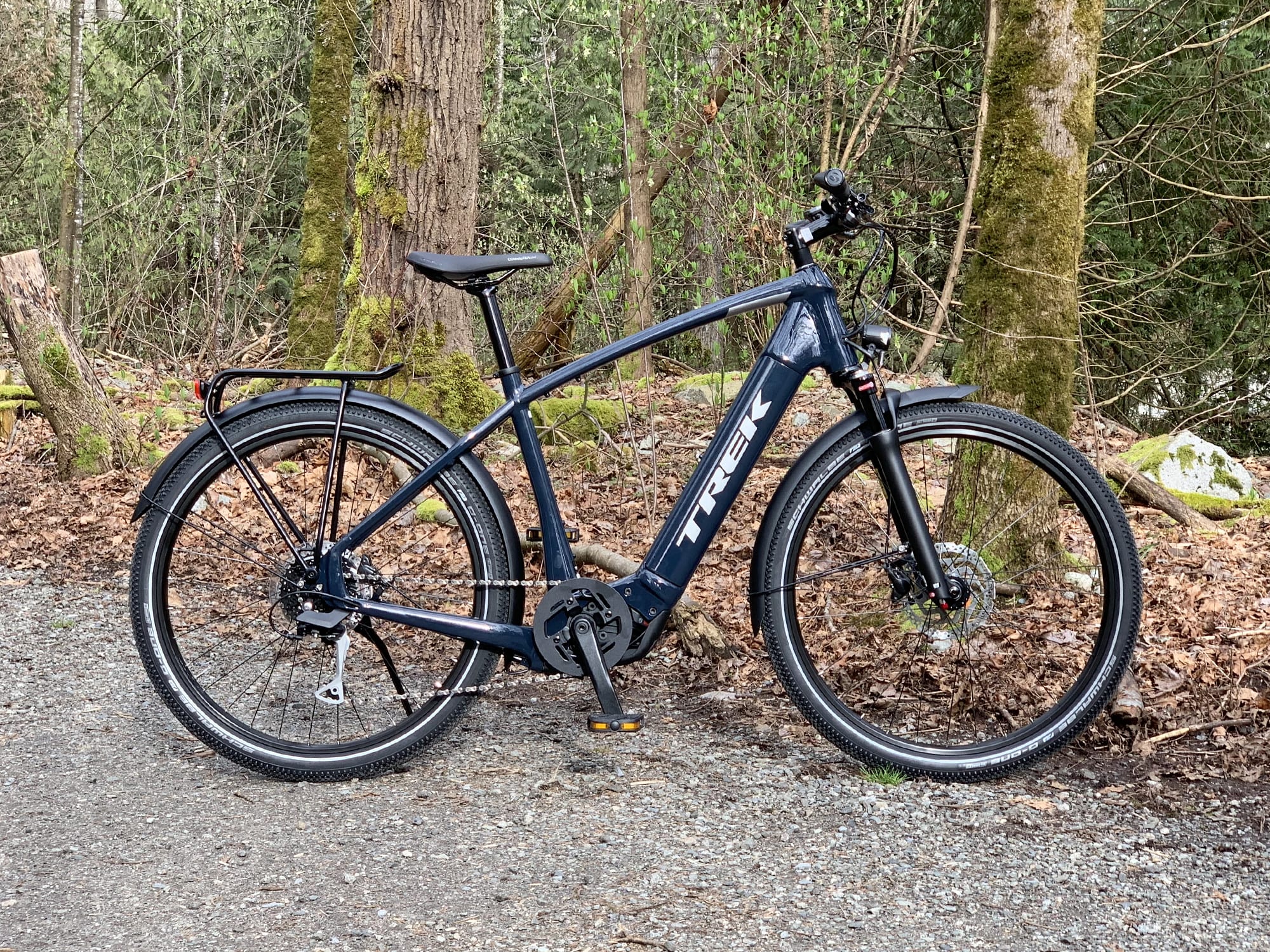
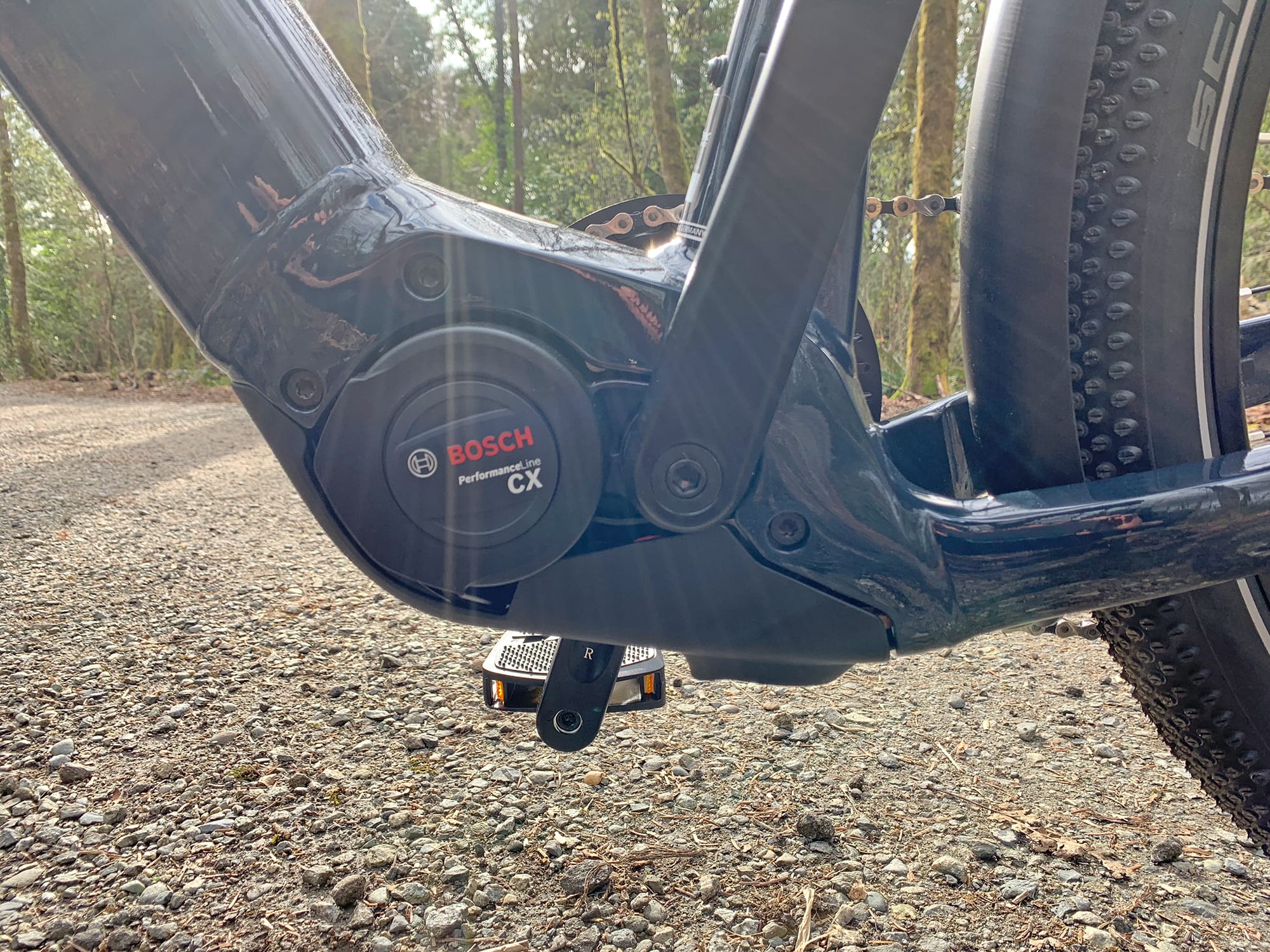
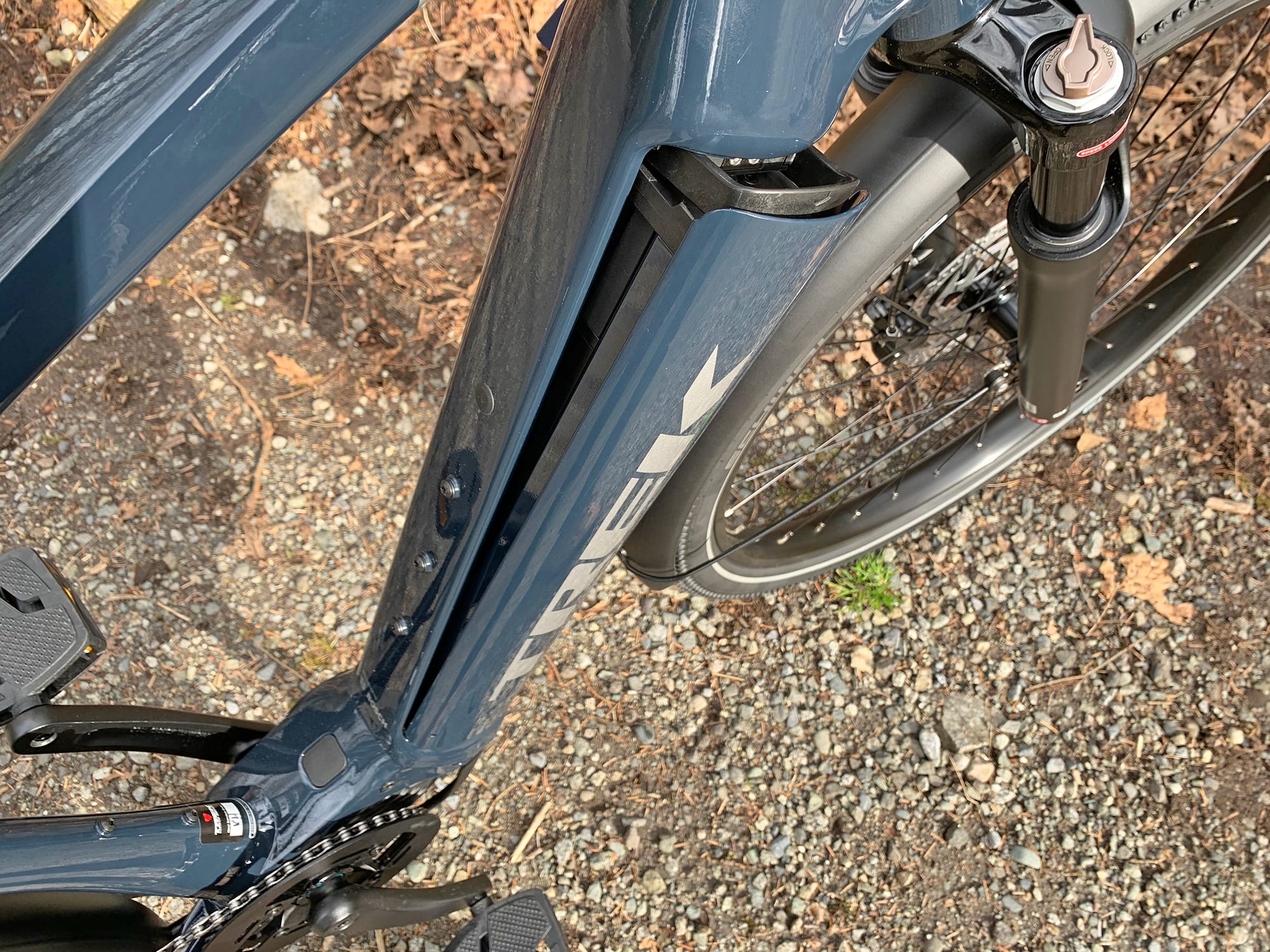
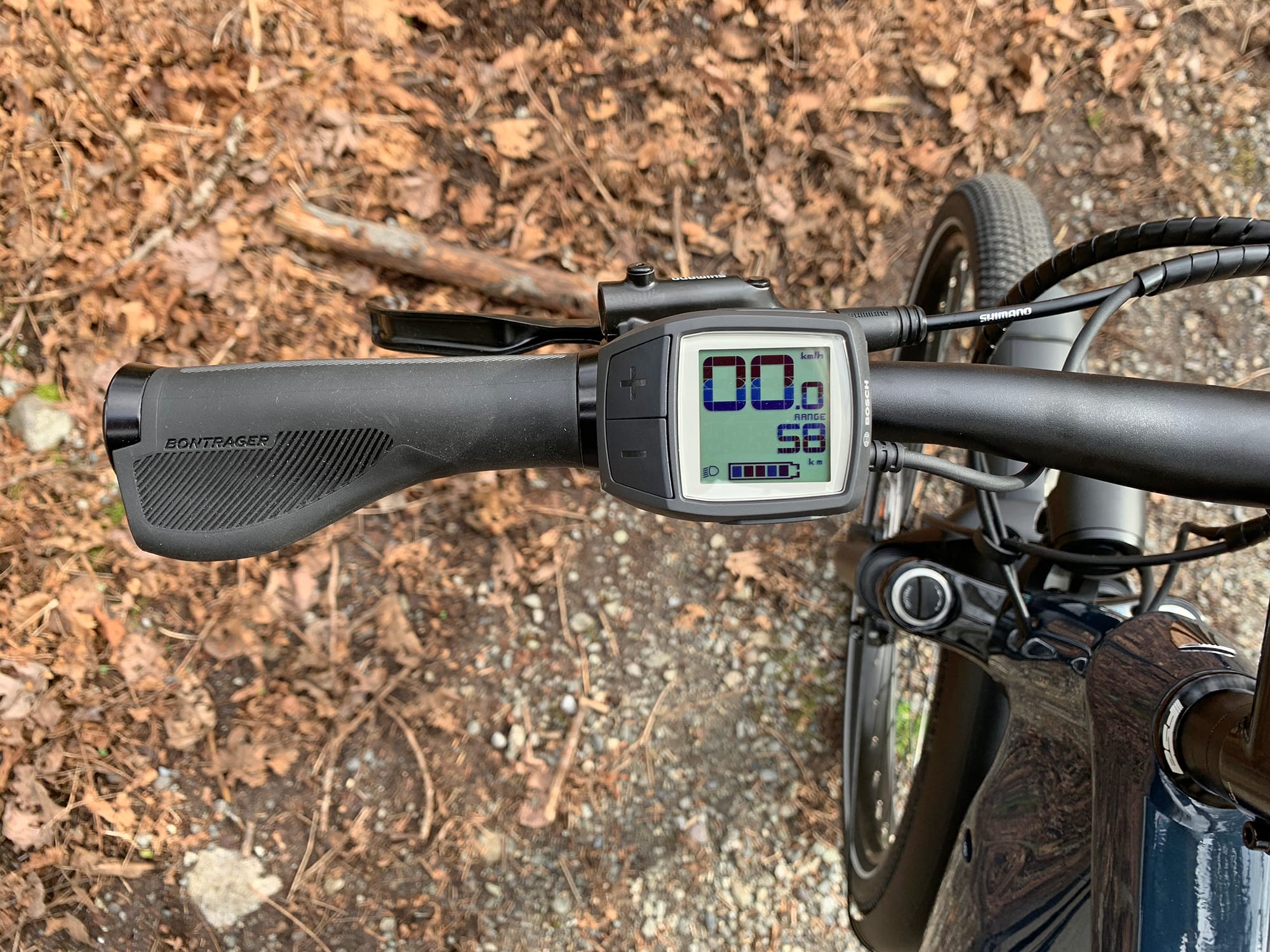
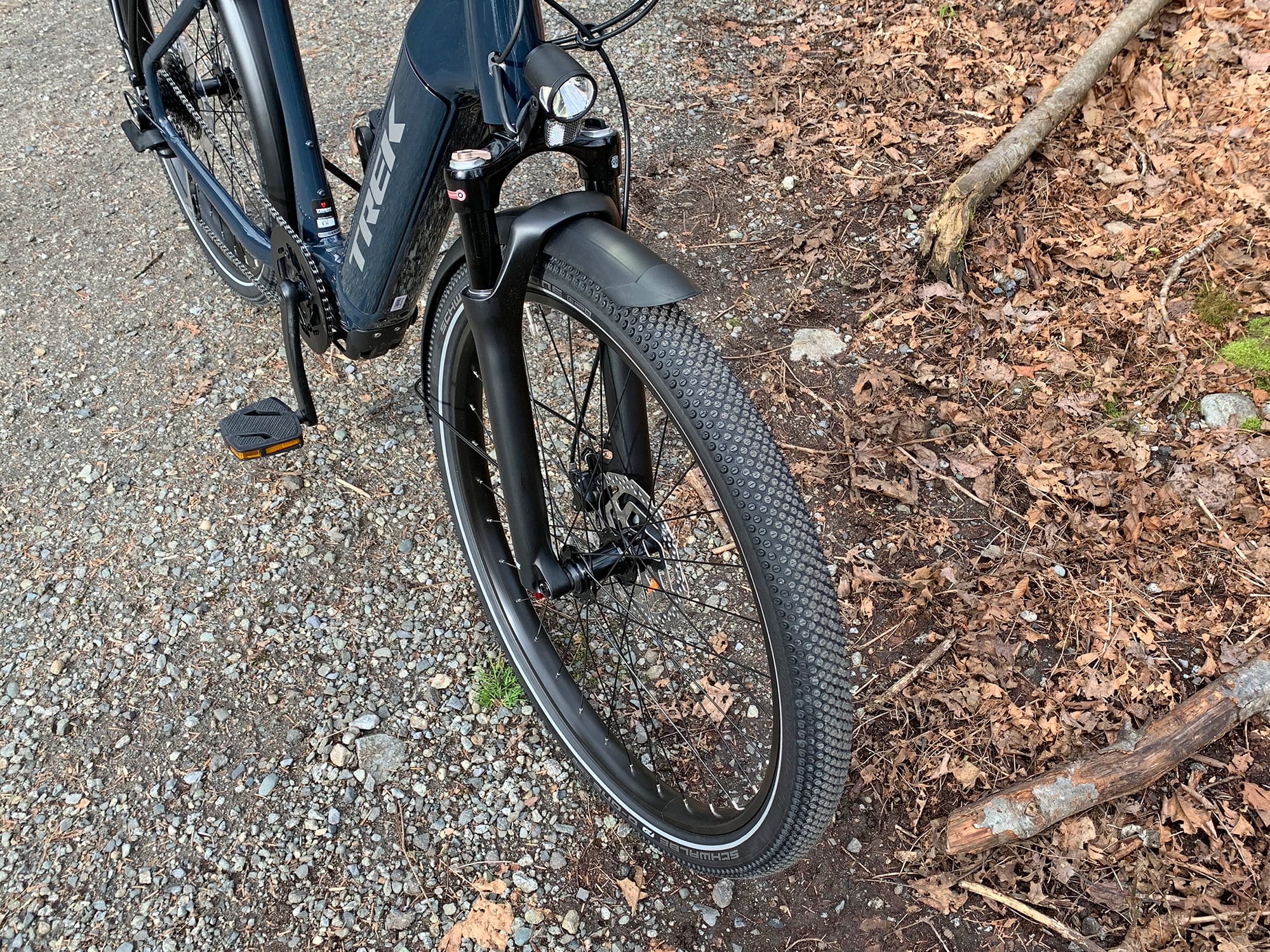
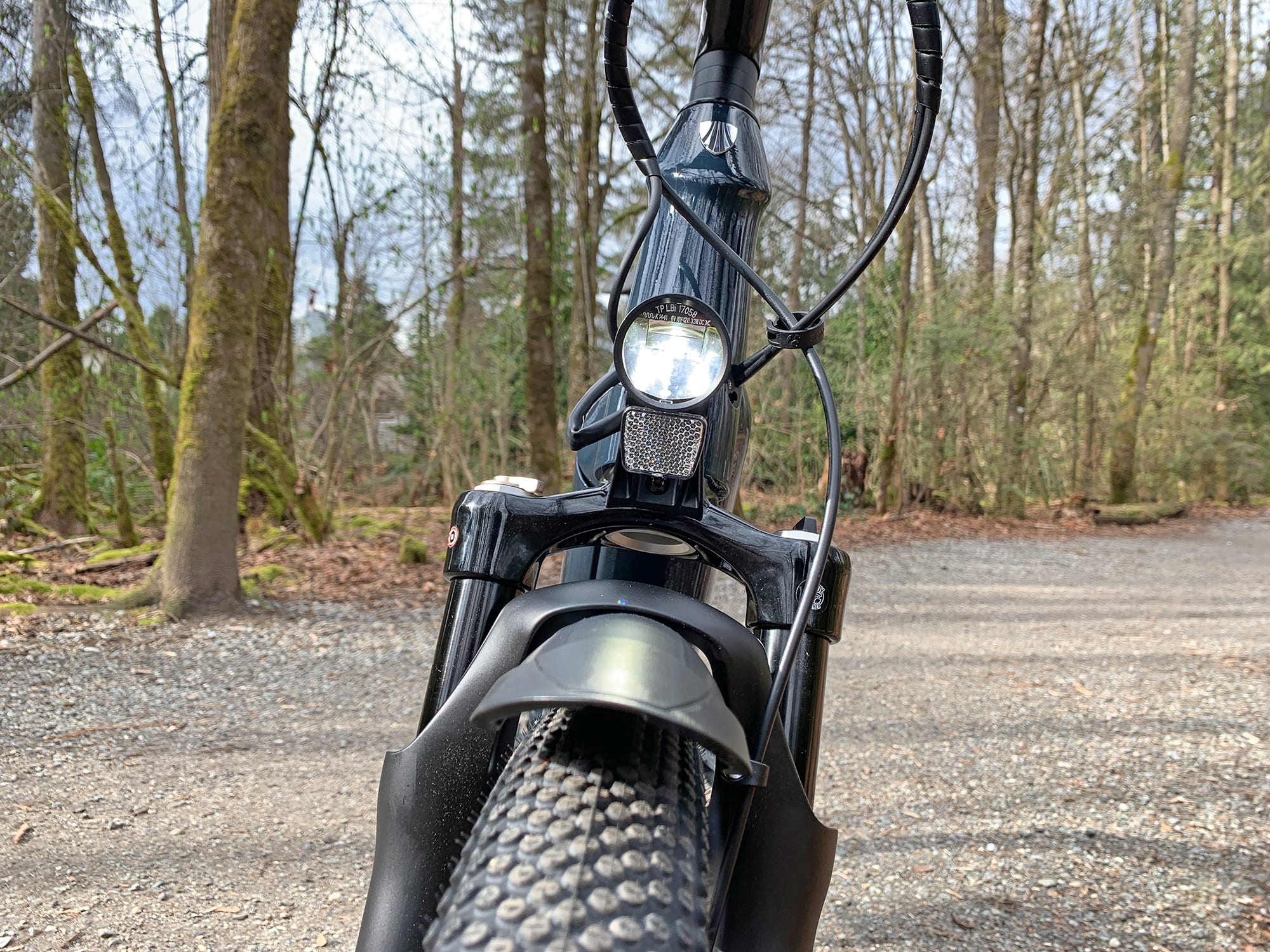
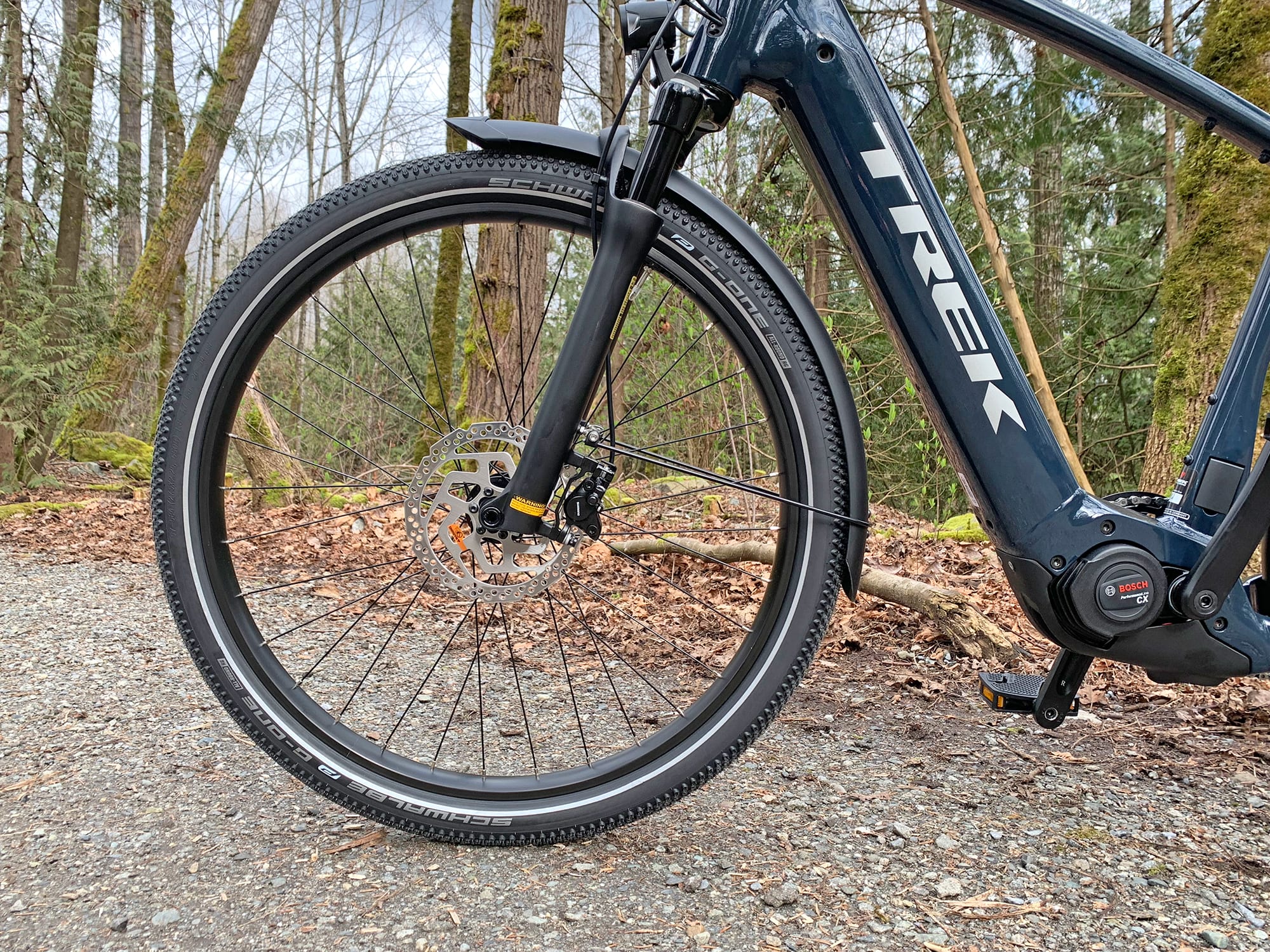
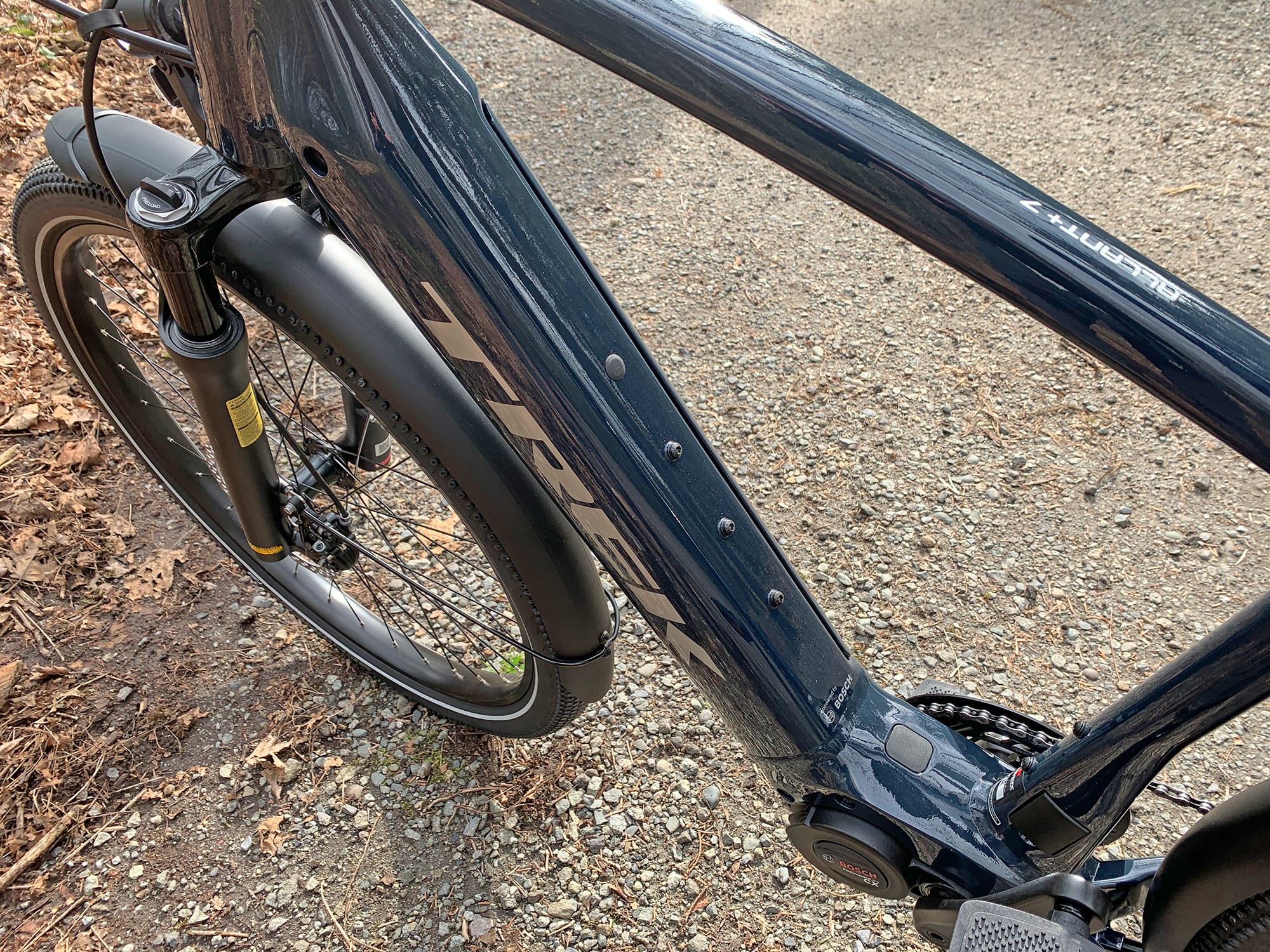
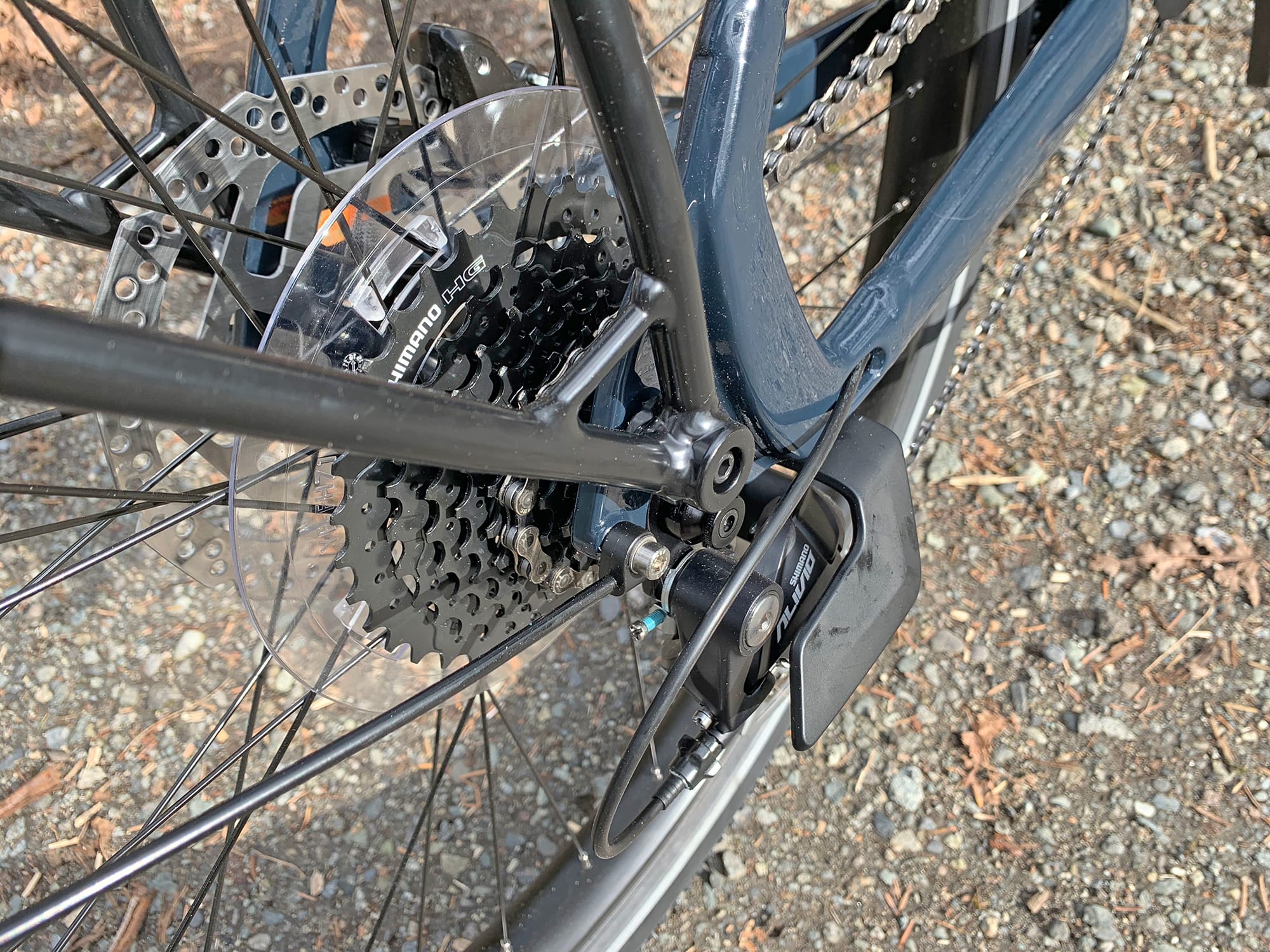
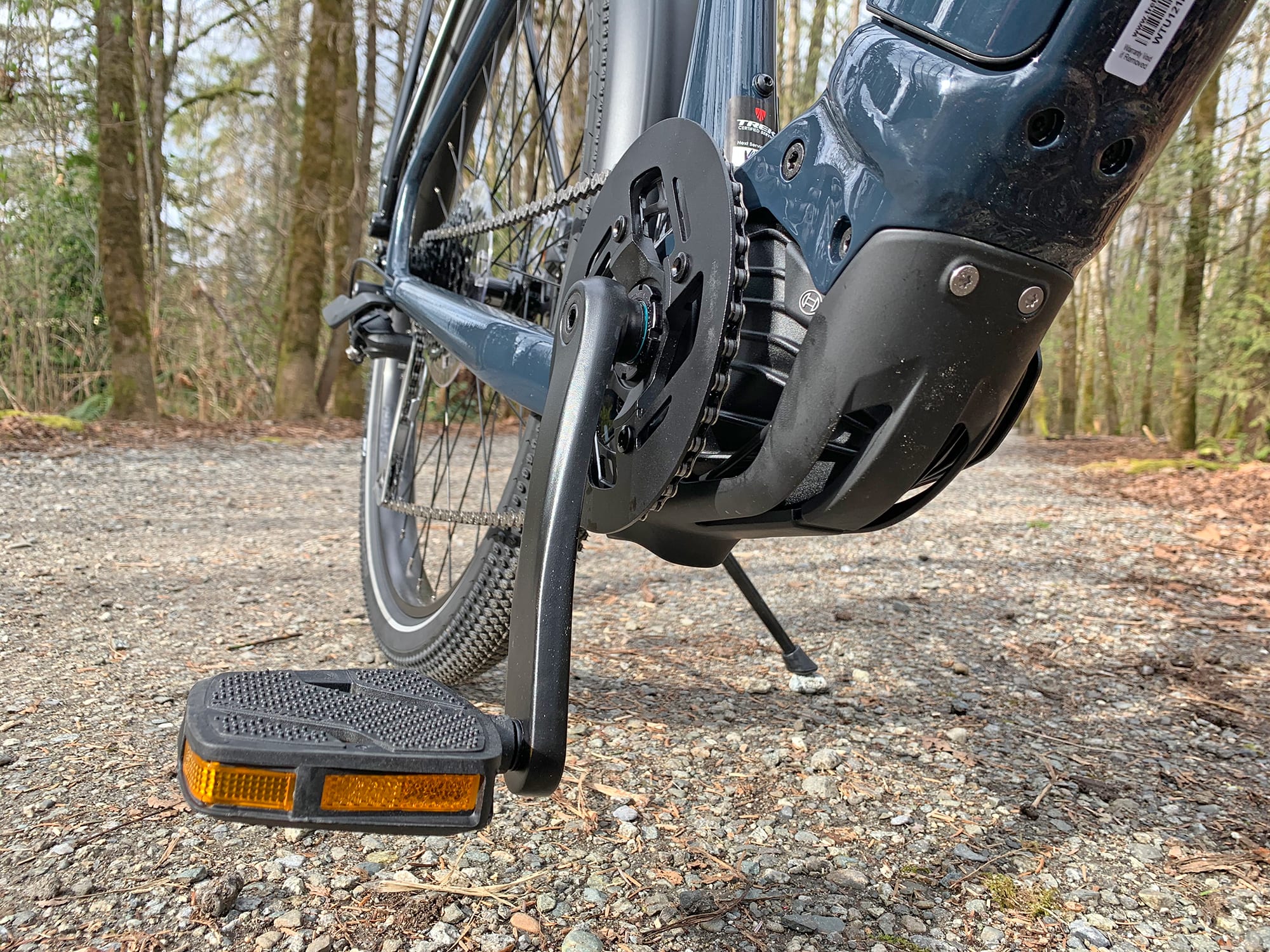
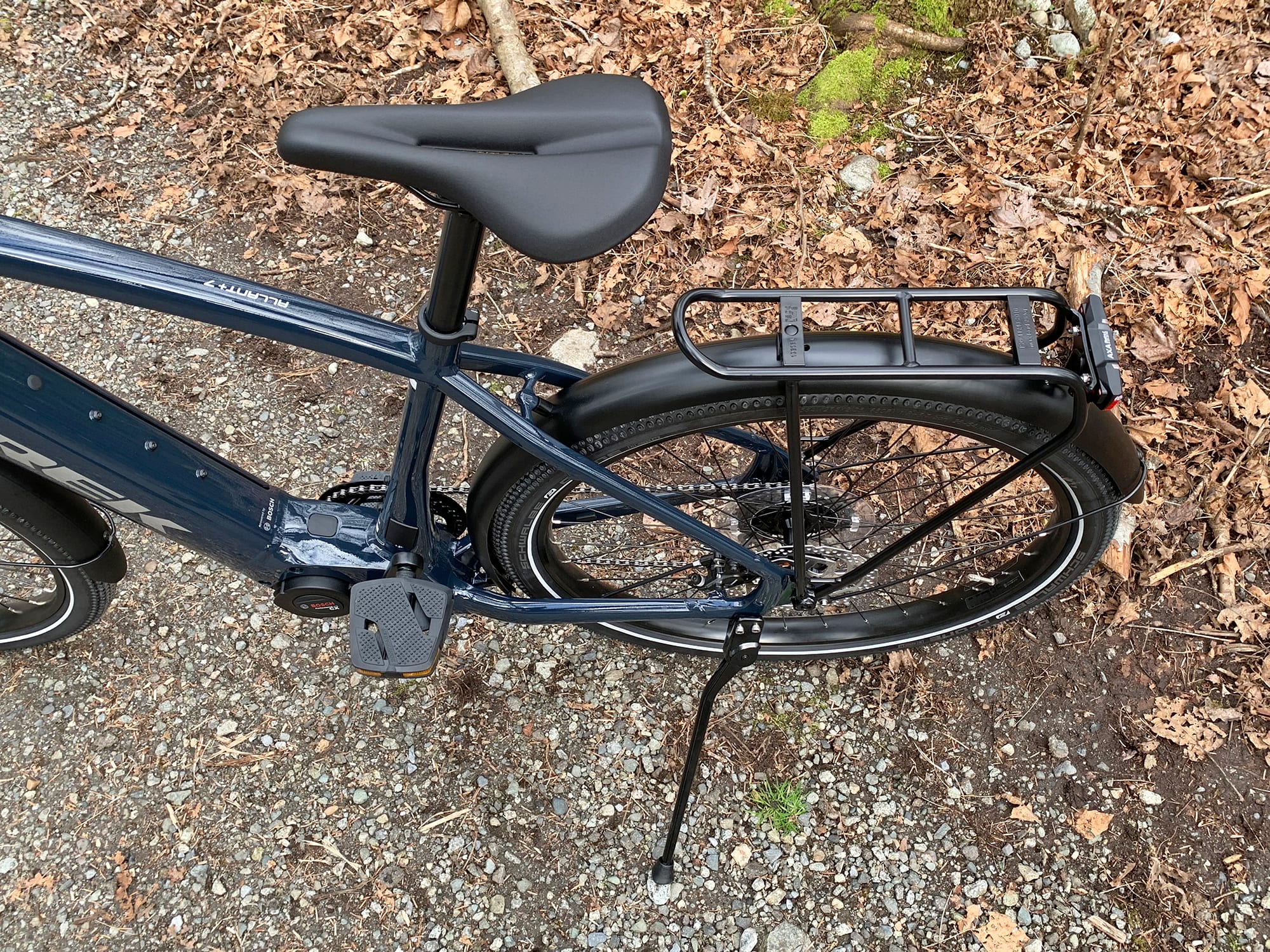
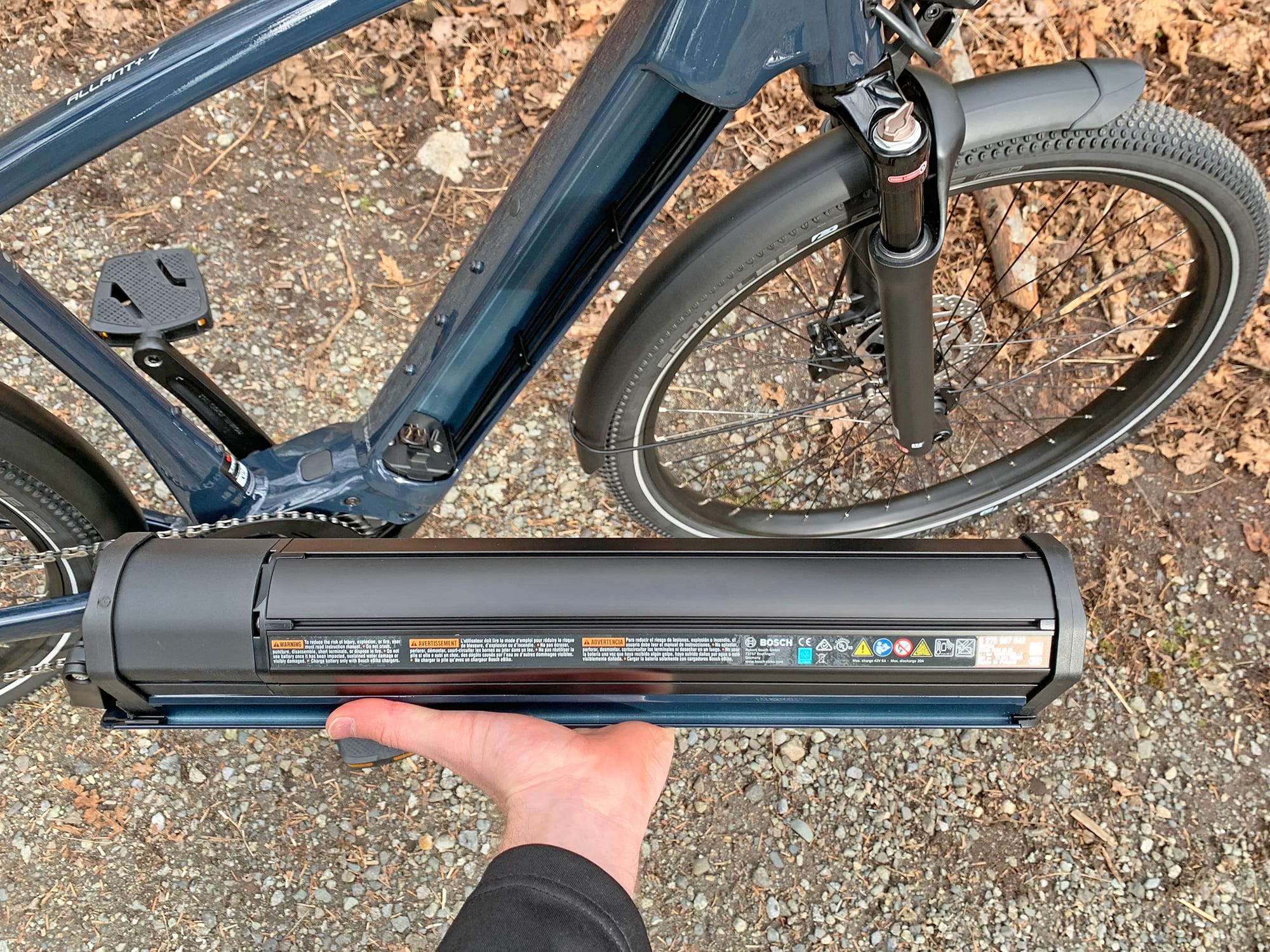
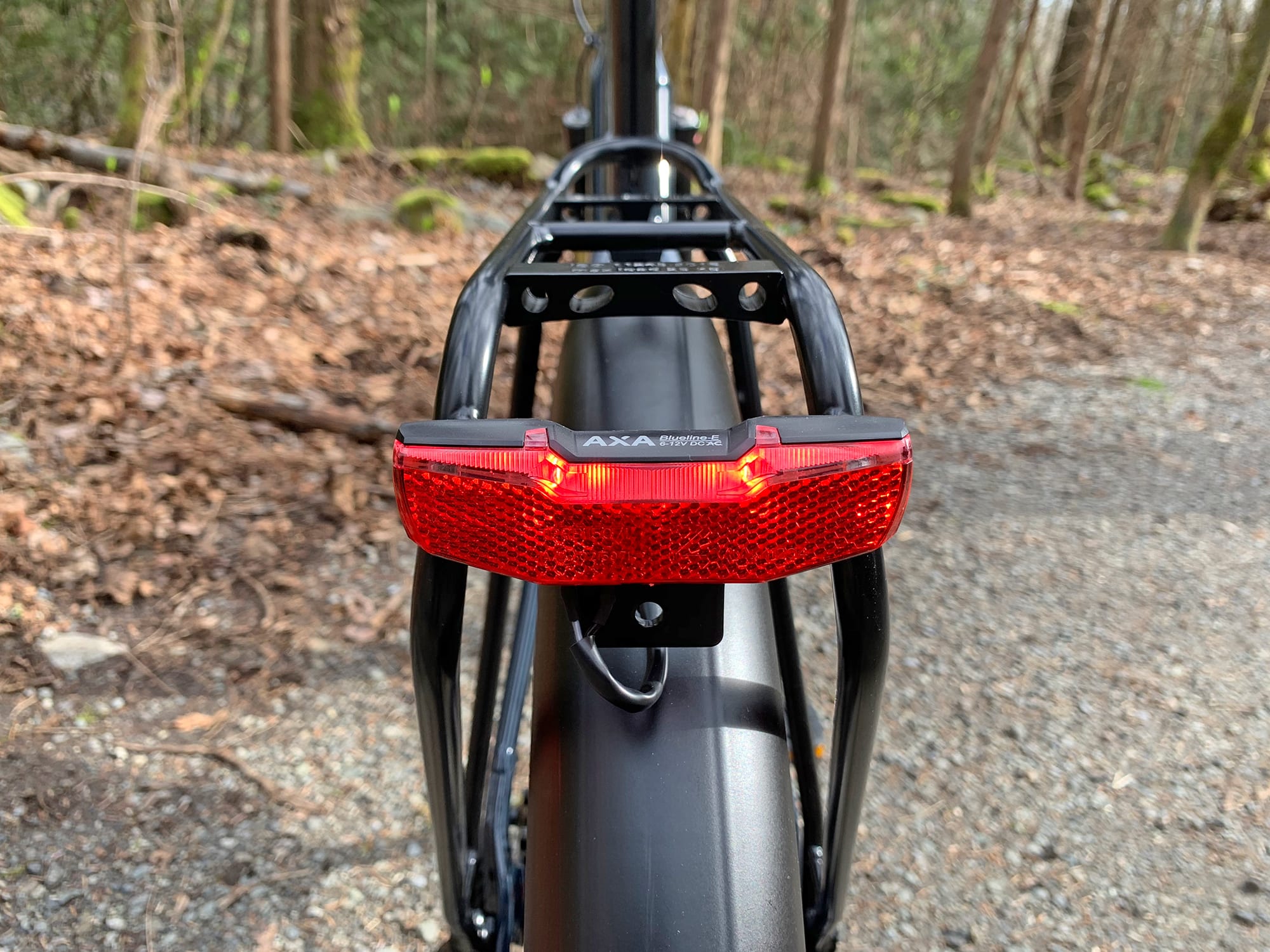

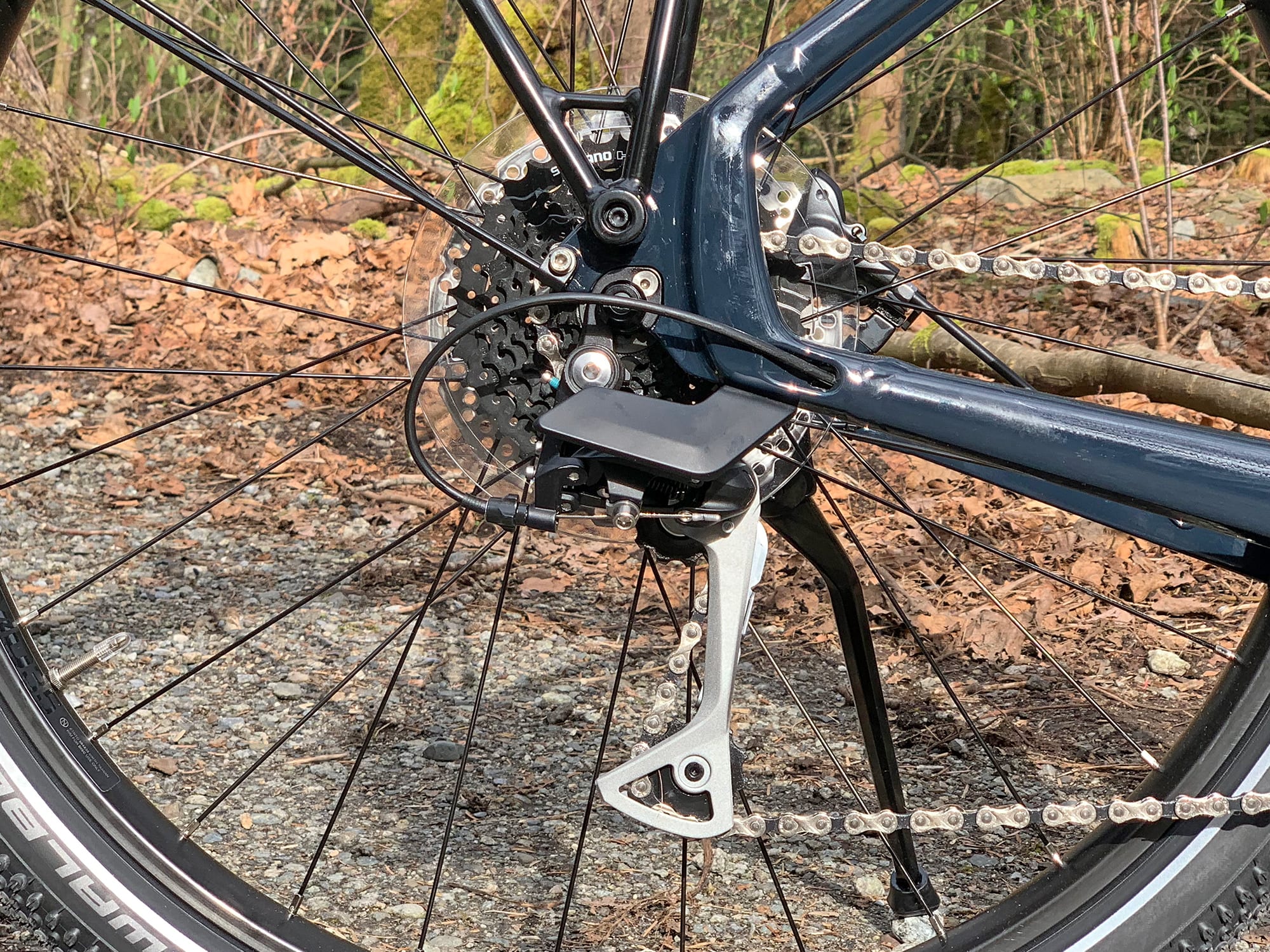
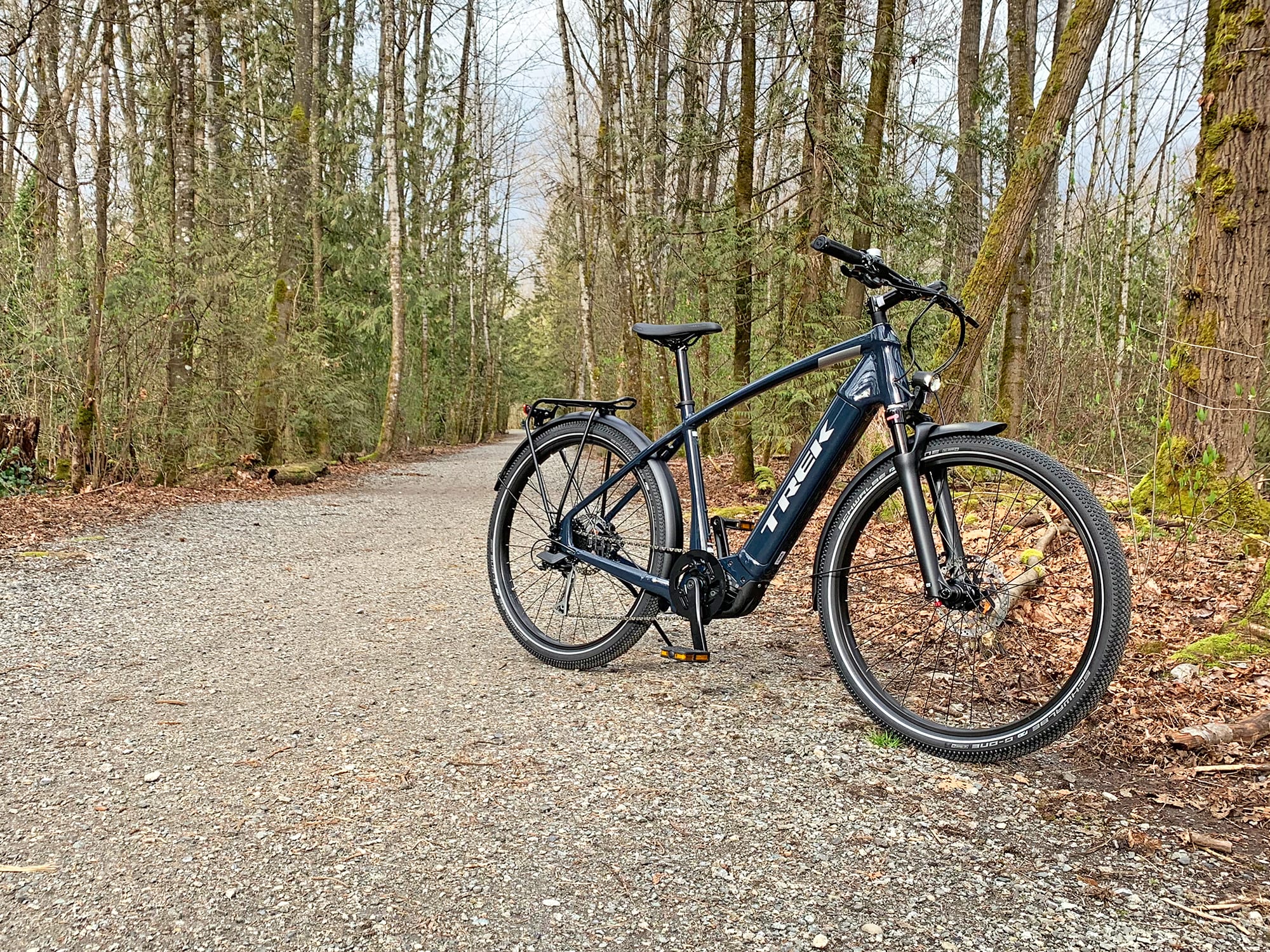
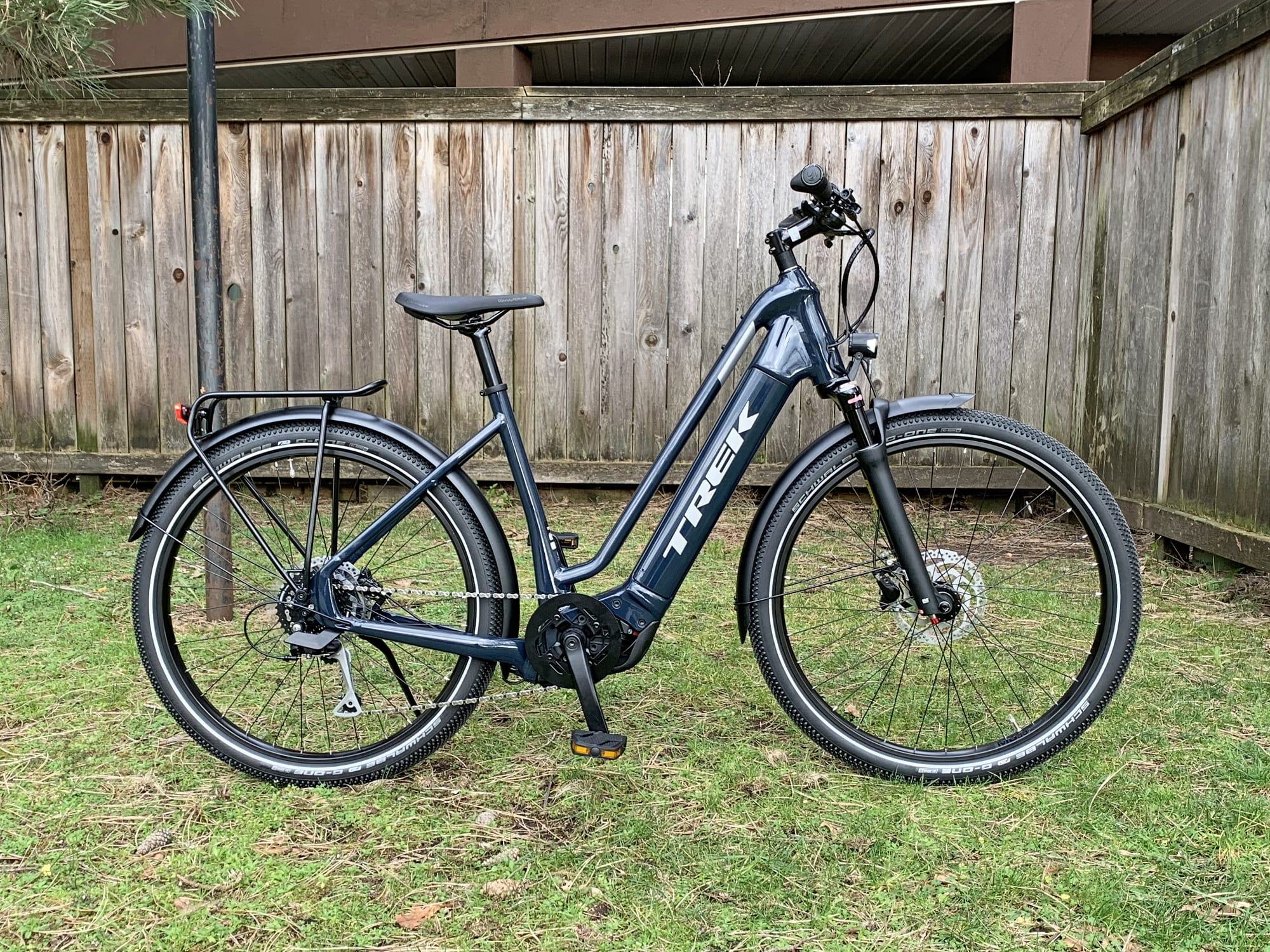
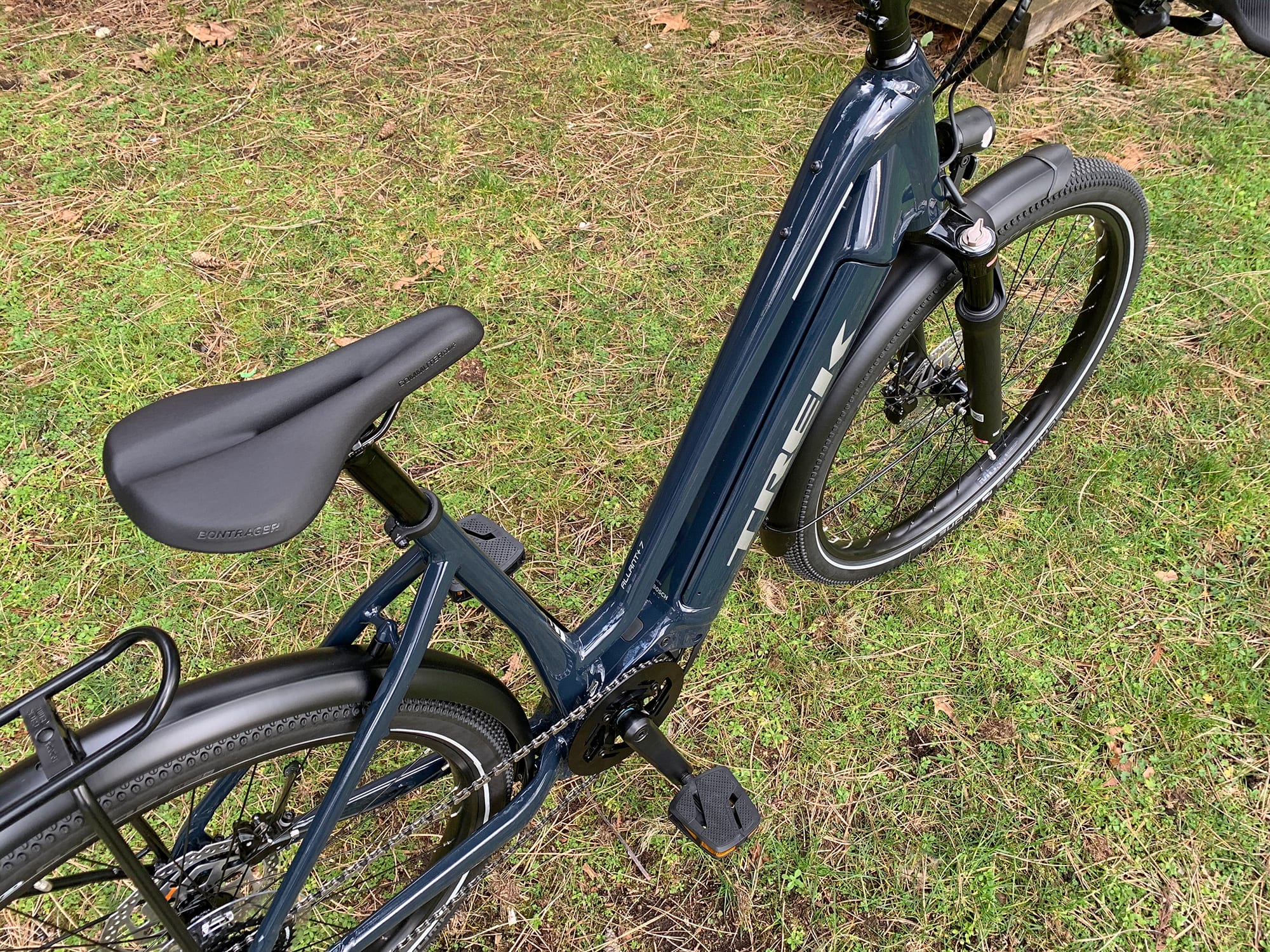
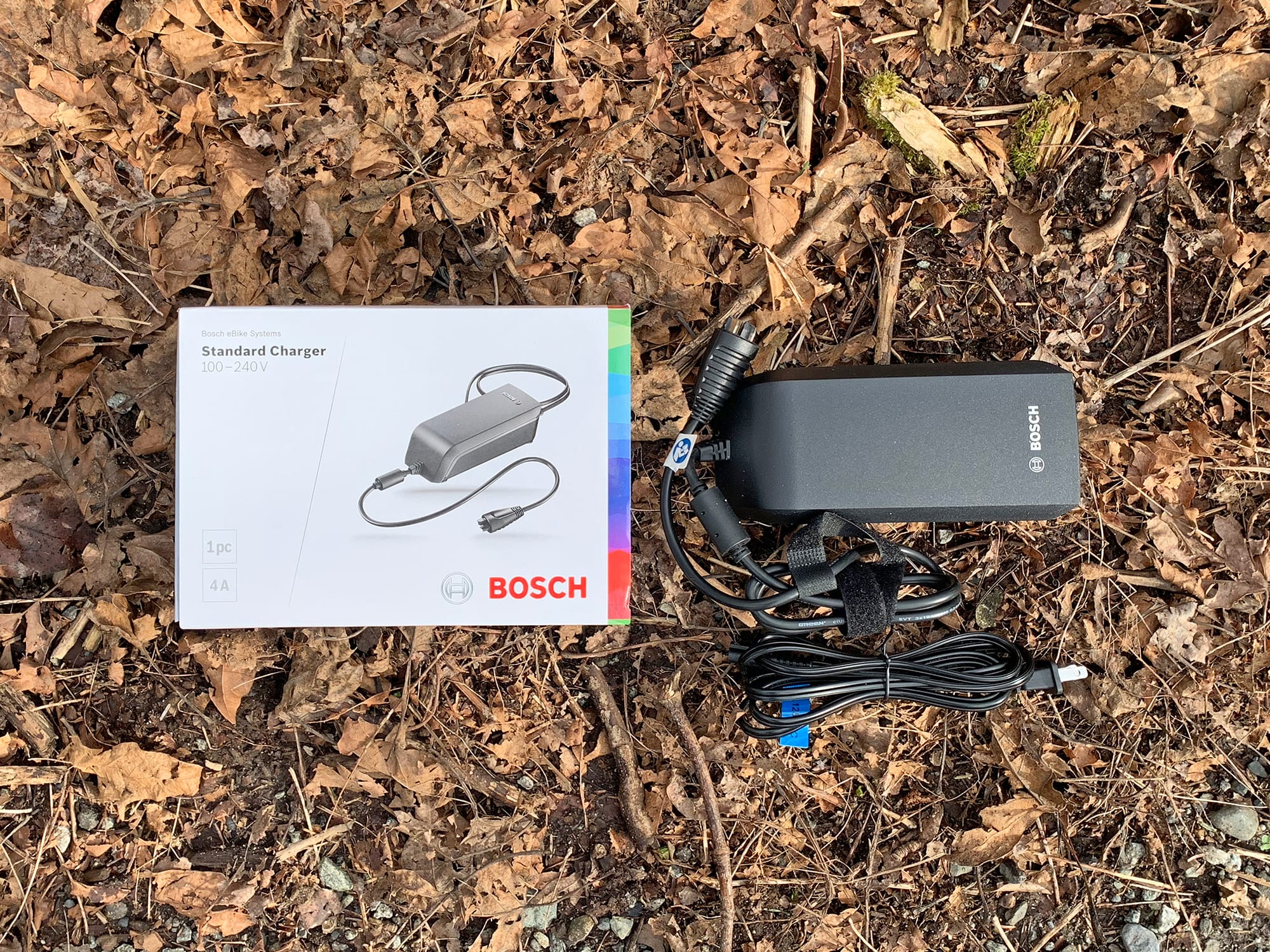
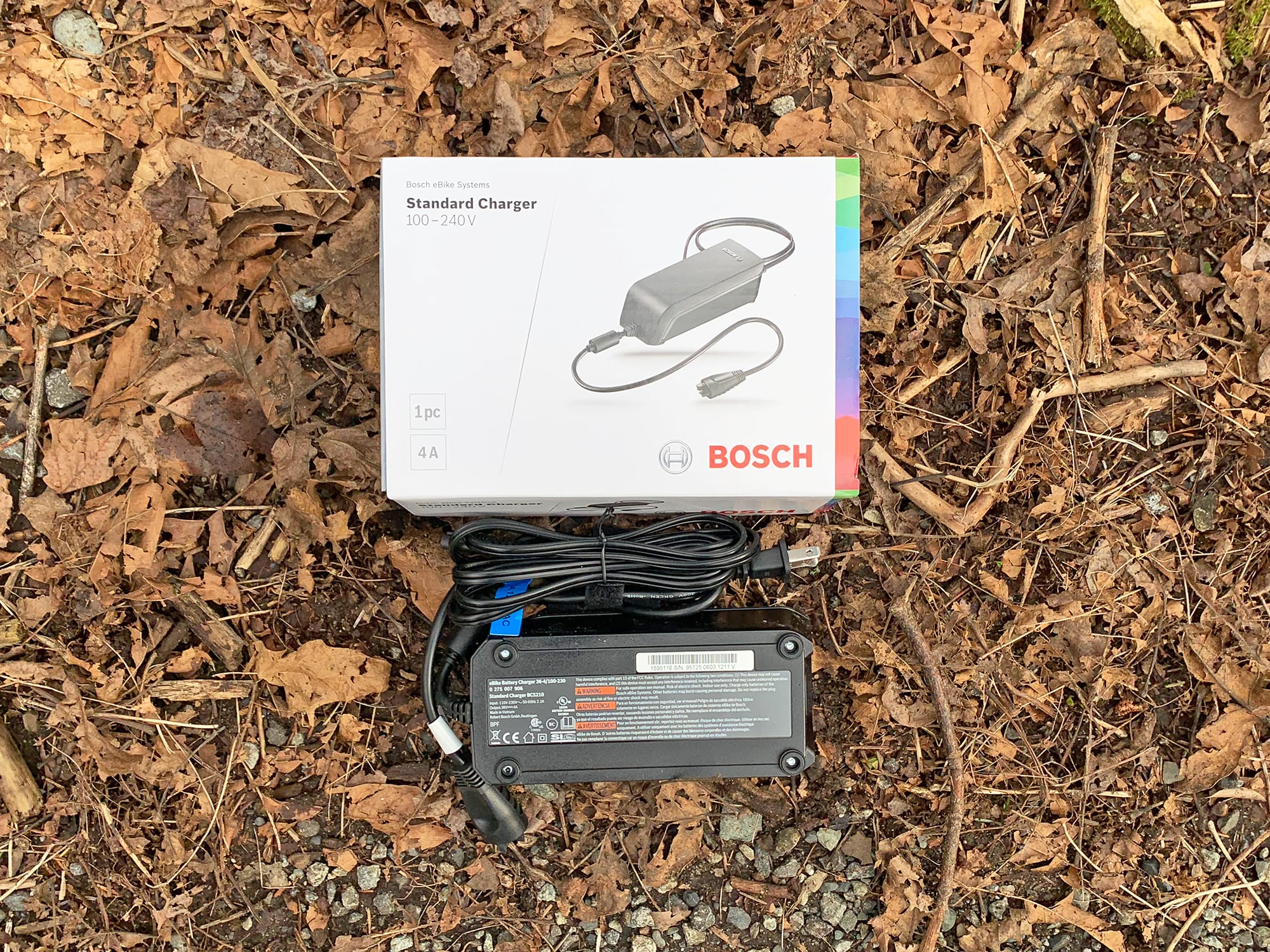
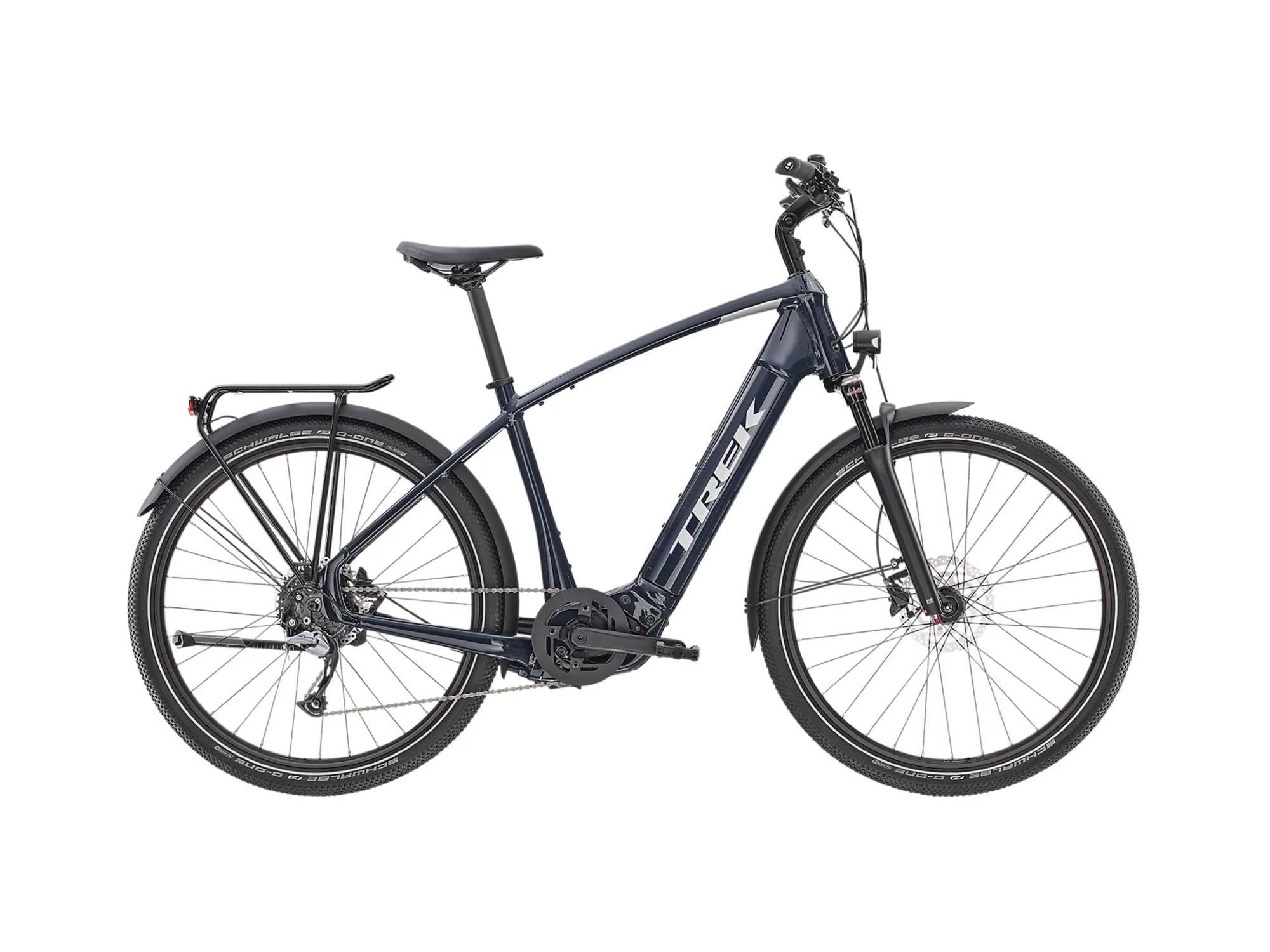
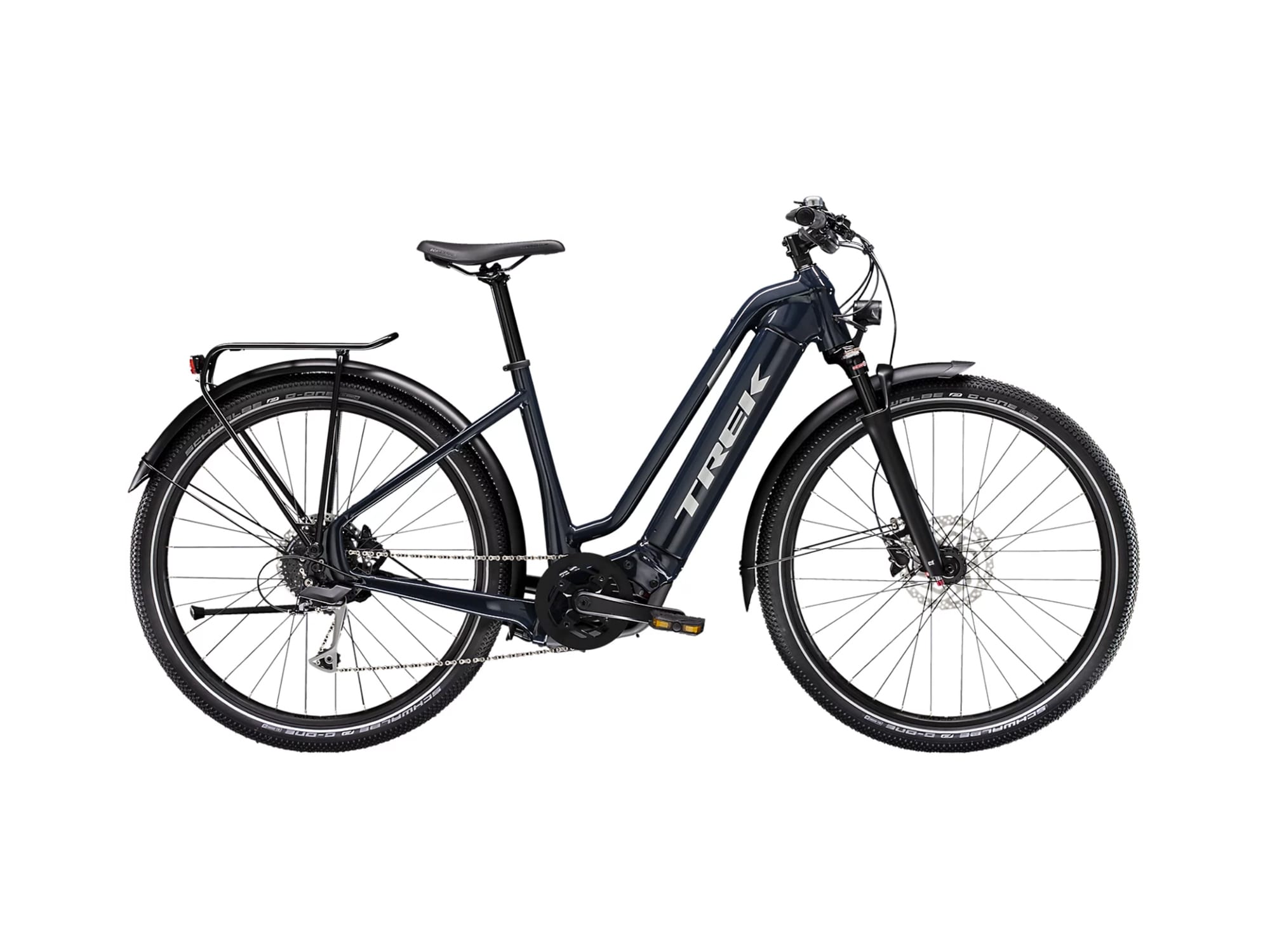

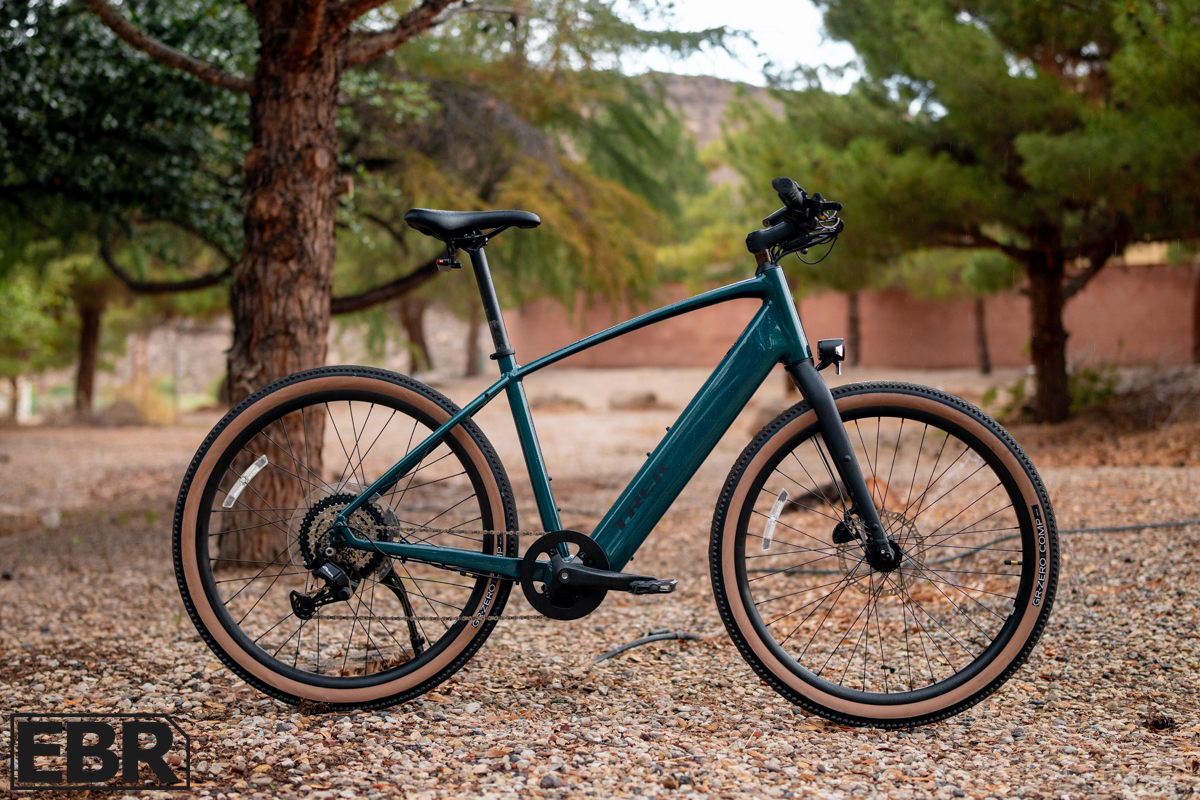
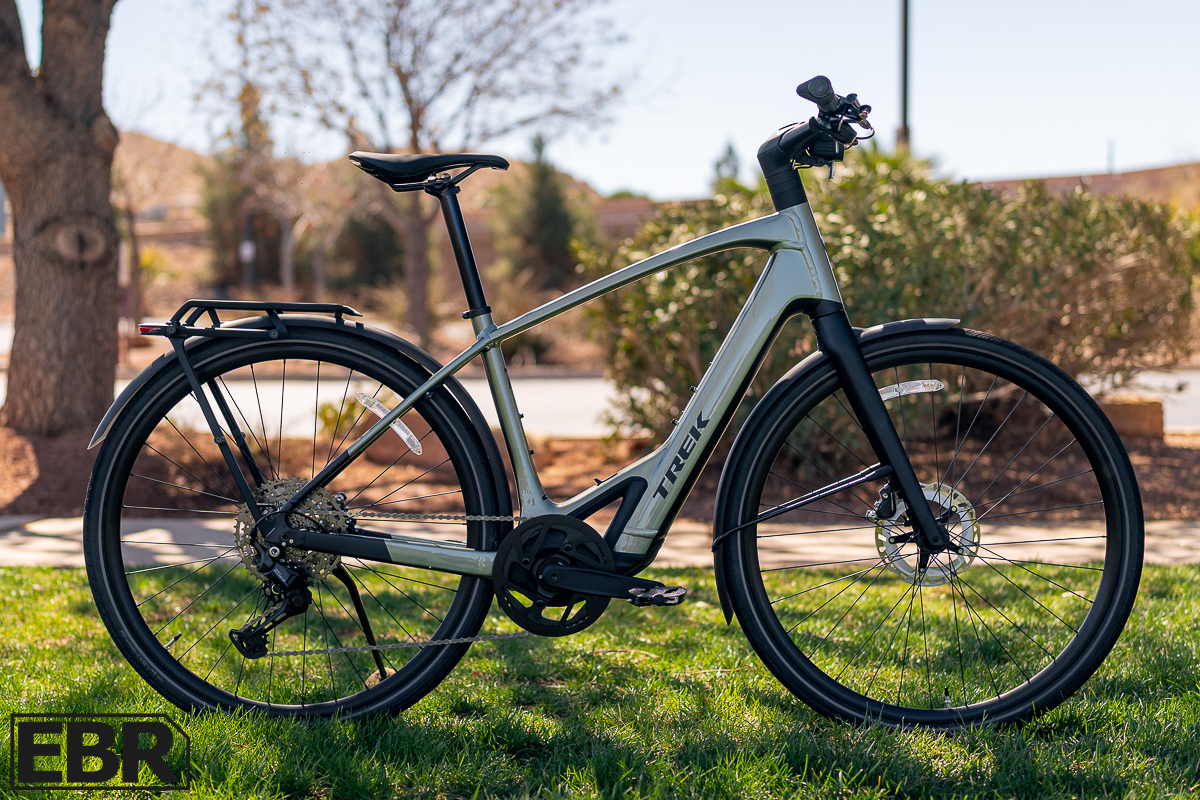
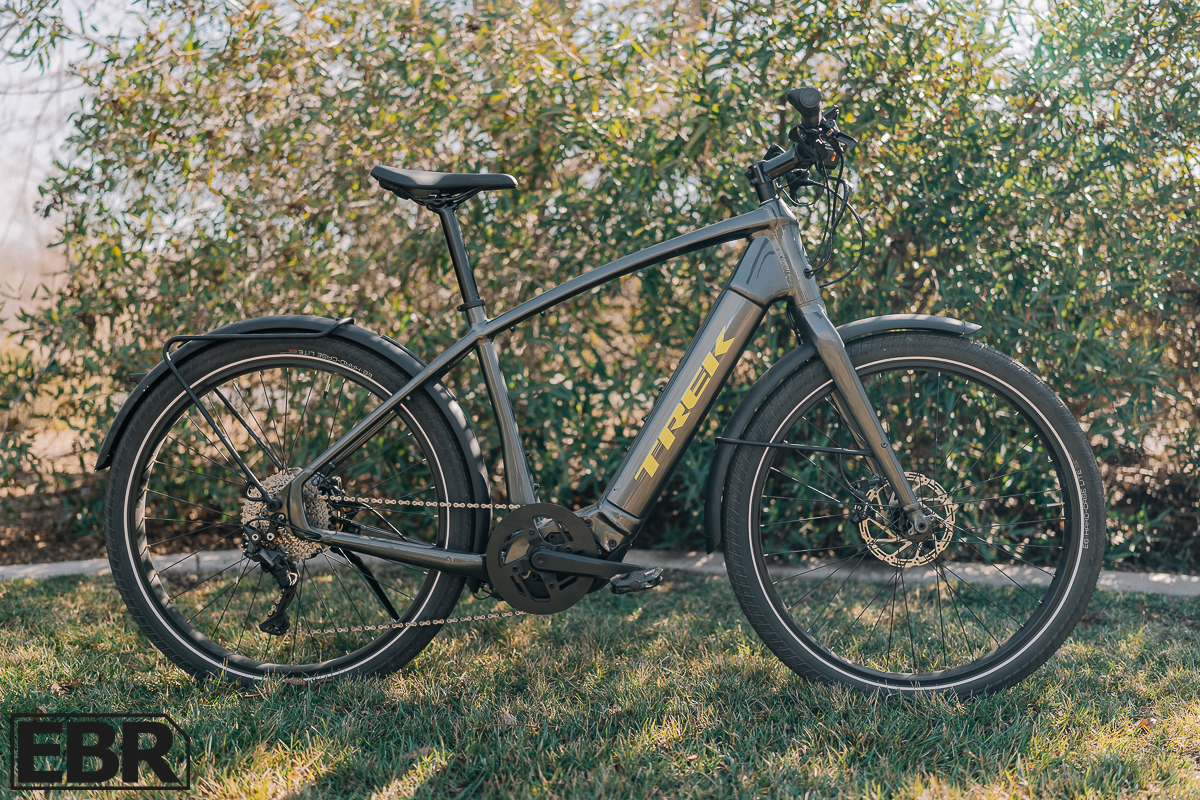
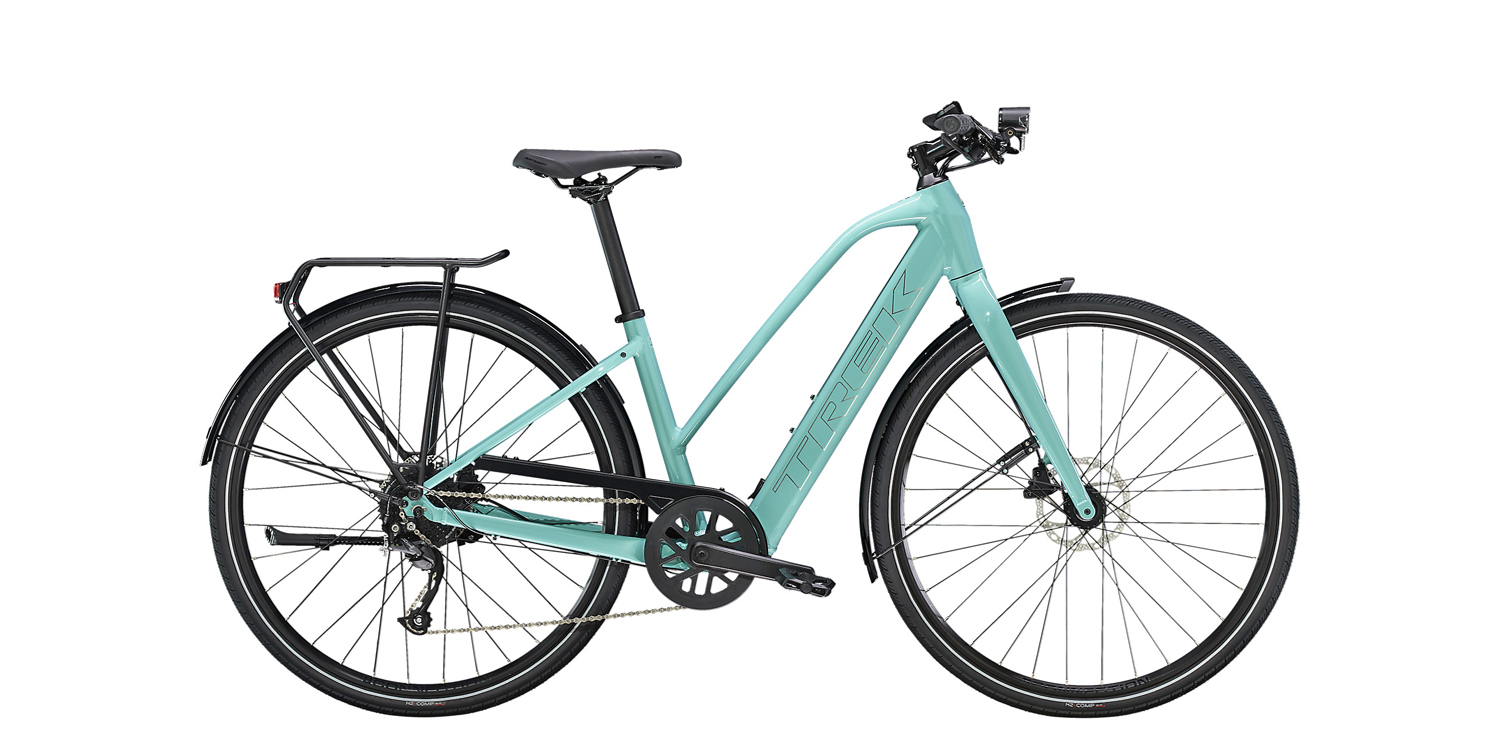
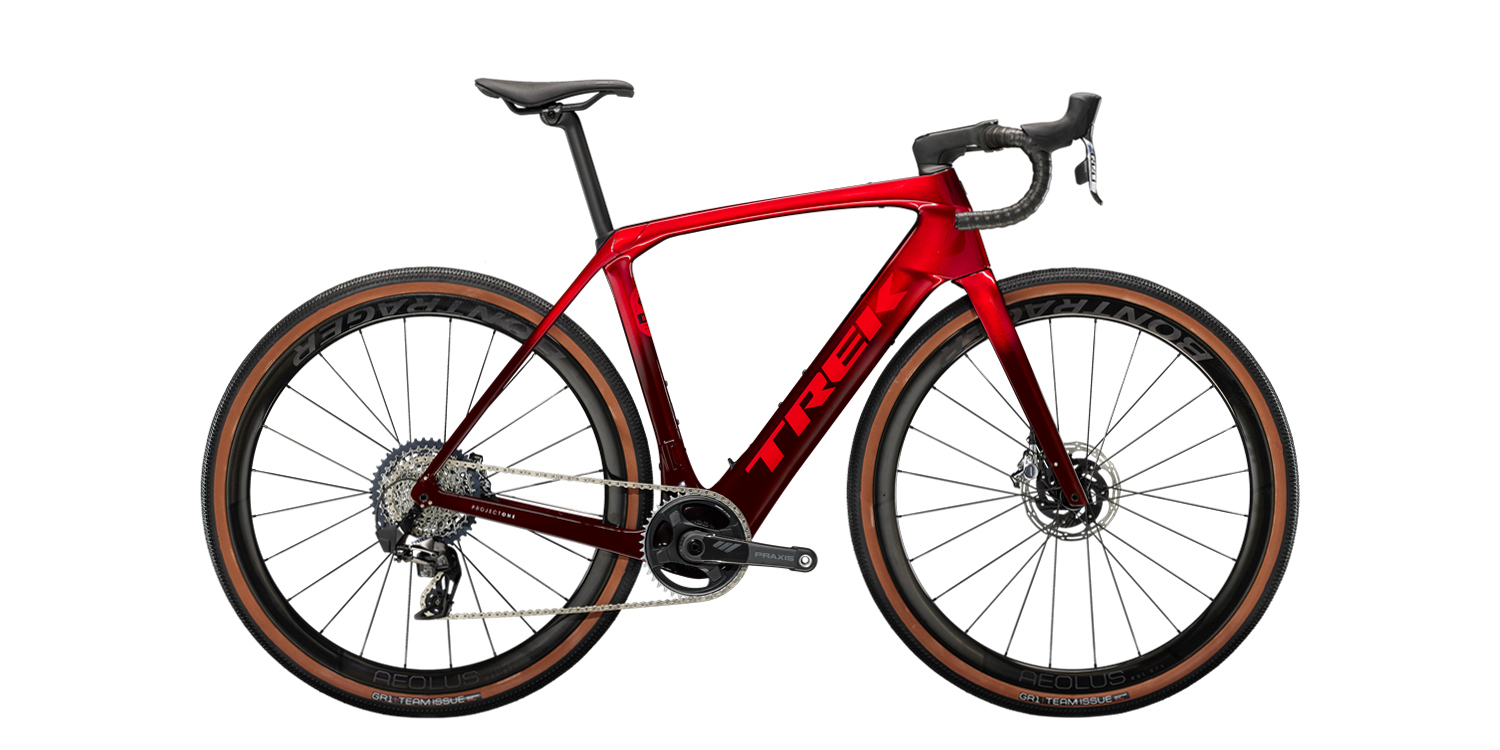
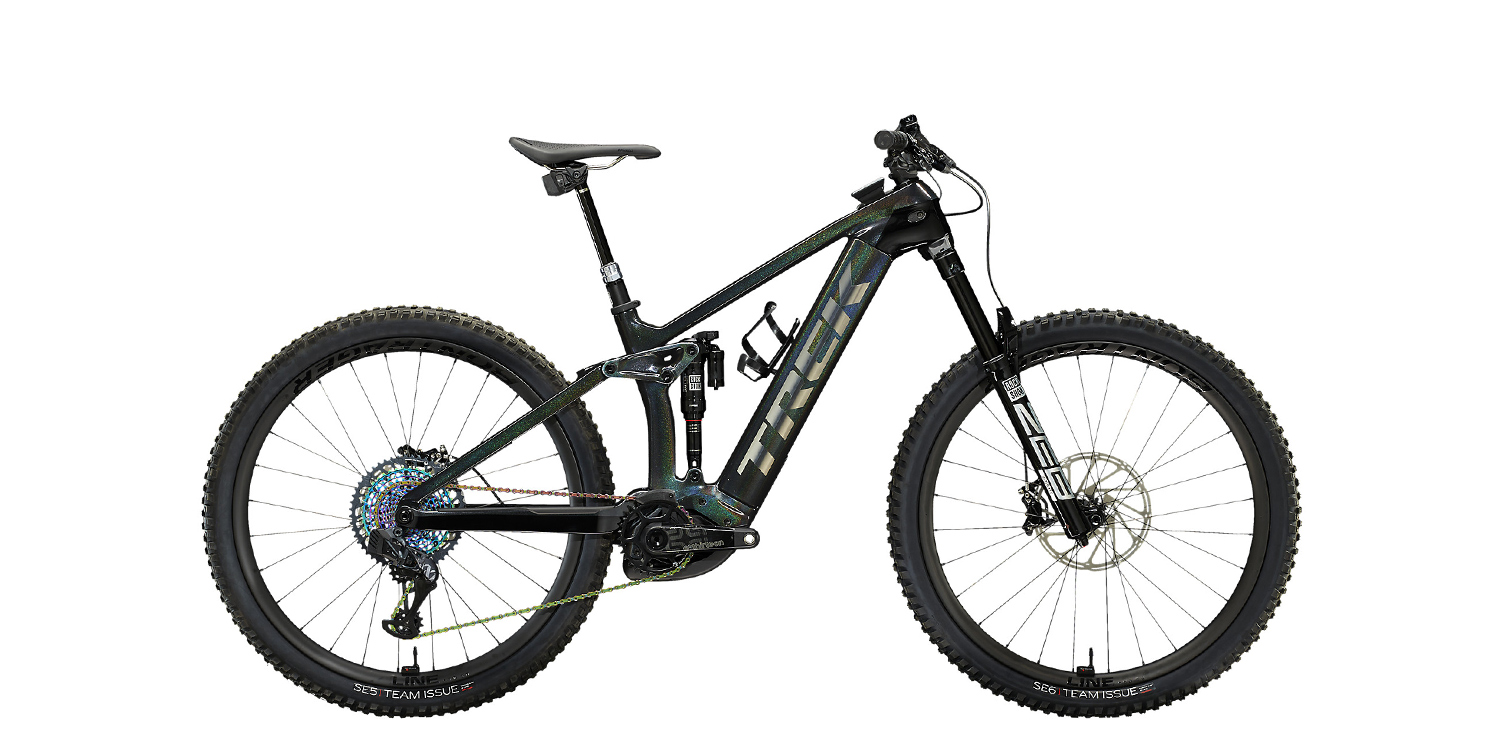
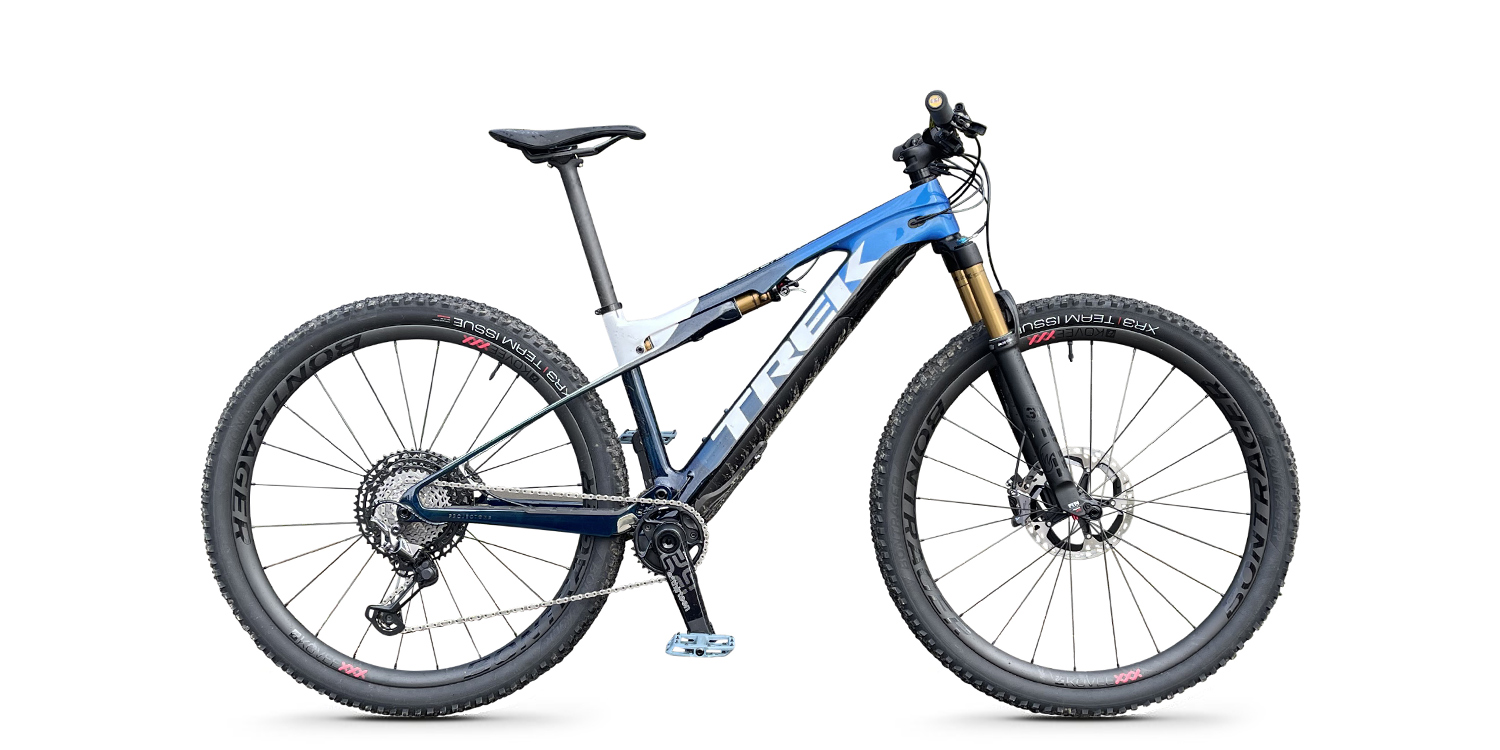
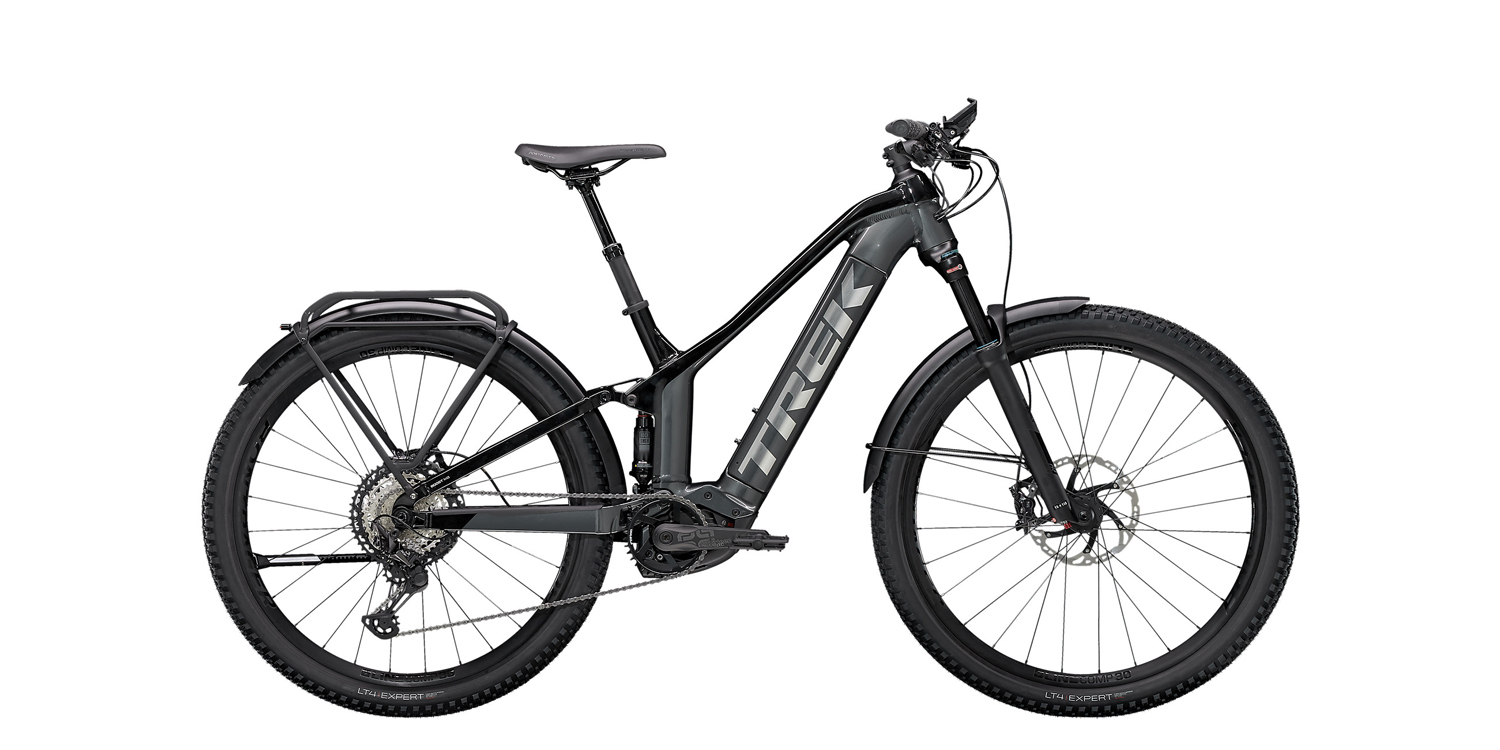
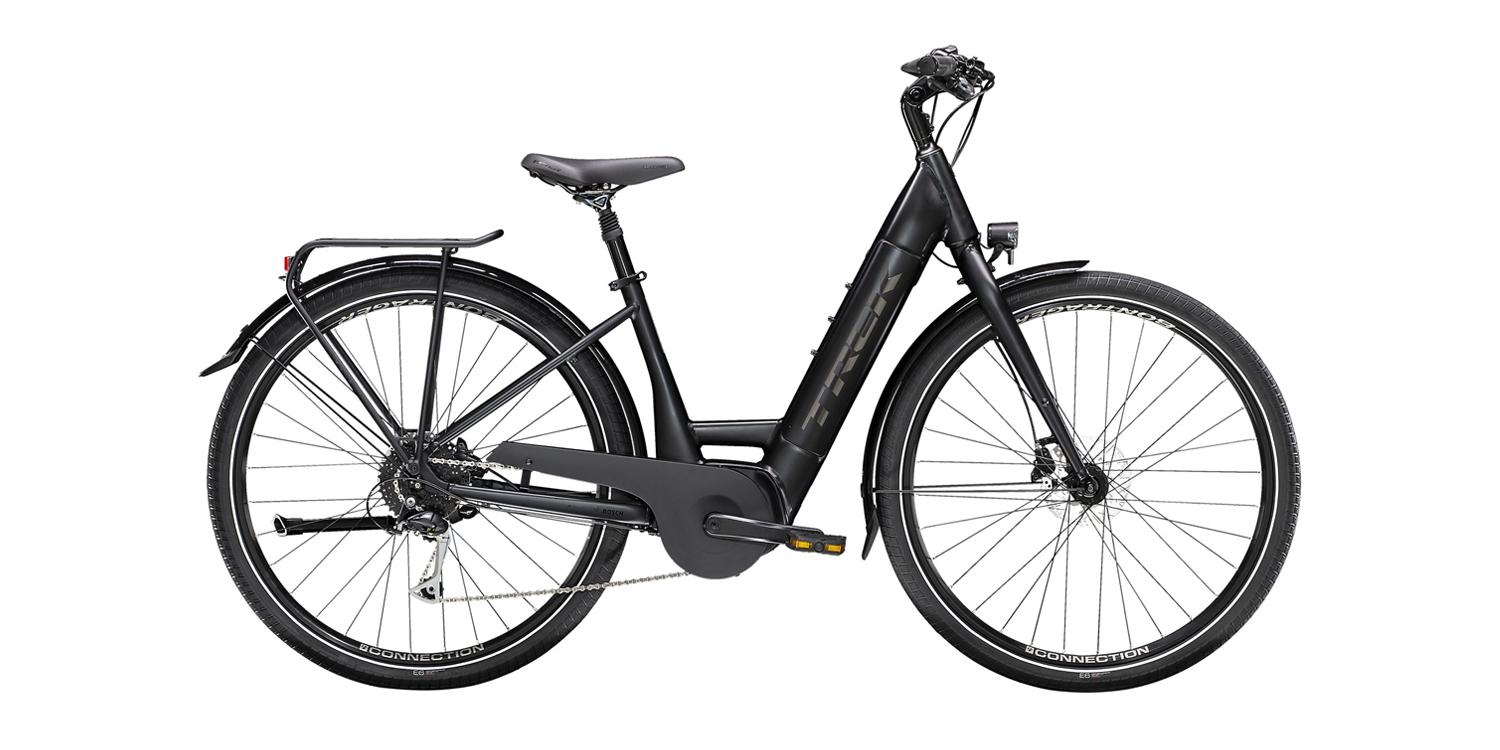
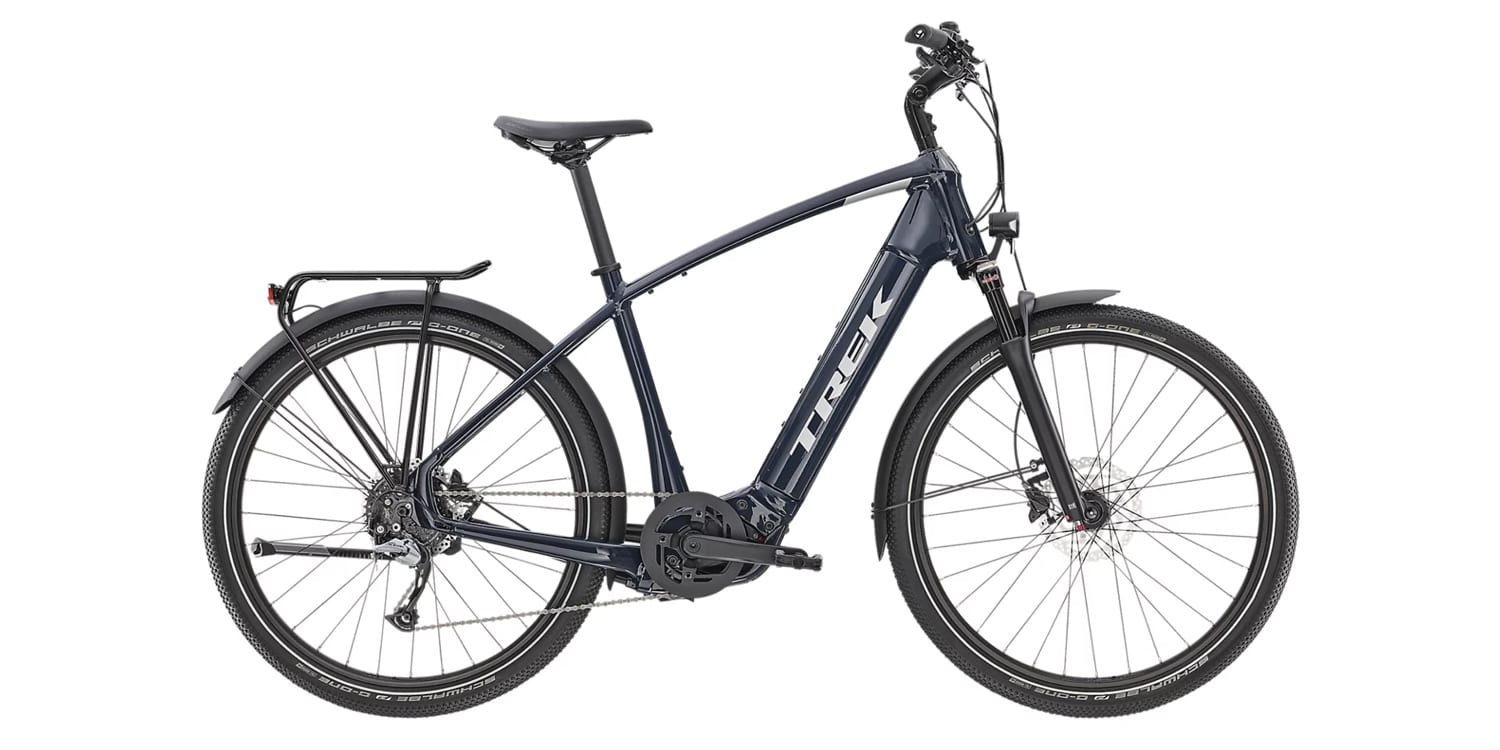
Stephen Mercier says
Court I understand you cannot use a Bosch powerpack 500 as the 2nd battery. That is a shame since I already own a few. Which bike do you personally prefer at their respective price points, The Allant + 7 or the Verve 3+ ?
Court says
Hi Stephen! I think that you CAN use the PowerPack 500 as the second battery pack, as long as you buy the mount from Trek. I’m not 100% sure if they sell it independently or include the battery. The only bike that is not compatible with the PowerPack 500 Range Boost is the step-thru version of the Allant+ 7 :) I personally do like the Verve models, but the suspension on the Allant+ 7 wins me over for sure, it’s more comfortable and with my sensitive back and neck, it’s something I’d happily pay for.
Rick says
I was informed by Trek That a Quill Stem with Adjustable Riser is an available part for $29.99 . Works with All the Alliant Models : Comes in 85 mm and 105 mm lengths and is listed here.
Court says
Awesome! That’s a good find, thanks Rick. My experience with adjustable angle stems is that they can get a little loose over time if you ride off-road. Keep an eye on the bolts, tighten it occasionally if you feel play, and I hope it works great for you!
Ryan Miller says
Great review as always Court! I’m trading in my Bulls Urban Evo for the S version of this in the states. So Speed-Pedelec that is available in Silver. Only thing I dislike is the Purion display. I want to upgrade to the Bosch Kiox if possible. Court, do you know if that can be an upgrade made on this bike? Thanks!
Court says
Hi Ryan, that’s awesome! I’d love to hear your thoughts once the bike arrives and you get some time in the saddle. Did you enjoy your BULLS Urban EVO? I liked that one too. Anyway, yeah! I do think it’s possible to swap Purion to Kiox, you just need a shop that will order and install it for you (and possibly update the software so it’s all current). The only issues I see is if Bosch is currently unwilling to sell a Kiox on its own due to supply limitations or marketing purposes ie. encouraging price tiering with bikes that use Kiox vs. Purion. I’d love to hear what you come up with. You could call Propel Bikes in Long Beach or Brooklyn to ask, if you don’t have a local/willing Bosch dealer.
Ryan Miller says
I did like the Urban Evo. Have had it for couple years. Part of reason I’m trading in is due to lack of Bulls dealers and service here in Iowa though. Trek is big here and our biggest dealer is Trek specific. I went with the Urban Evo back then after watching your review and wanting a speed pedelec but Trek (only brand ever rode) didn’t have any back then. The Allant+ 7S has a lot of same specs as my Bulls plus I can get the double battery with the Trek and the full service with our dealer. I CAN get the Kiox head unit but just not in stock currently but not a big deal right now.
I did look at a newer Bulls bike you reviewed but with lack of dealers (only 1 in Iowa) and price nearly $1,000 more than the Trek I decided against it and go back to Trek.
Want to ride while we are in this quarantine!
Court says
Nice! I completely see your logic, hope the Allant+ 7S works great. It’s wonderful to have dealers nearby and yeah, the new double-battery option is SO COOL! I hope they get the Kiox in stock soon and yes, enjoy this ride time :D
Doug says
Am I reading this right that the two axles require different size hex keys? What is that all about?
Court says
Yep, that surprised me as well. Not sure why they didn’t try to match them. There are a lot of little details to consider when building an ebike, and often times, a front and rear axle may be longer, thicker, quick release or not… so I can see how the bolt would be slightly different. This may come from sourcing standardized parts at a cheaper rate vs. making their own axles that match perfectly. It’s a small detail that most wouldn’t notice, I’m glad you caught that and brought it up, Doug ;)
Richard Ireland says
I don’t see that as an issue if you carry a proper bike multi-tool.
Mark says
Hi Court, thank you for a great YouTube channel and website! I’m looking for a bike for pavement and light trail duty. This Trek seems to fit the bill, but when I look at your “best bike” list, the OHM Quest is by implication a potentially better option. All things considered, would you say the OHM is still a better choice? I’m 68 yrs old, 6′ tall, 175 lbs and looking for a ride that’s easy on the wrists, and light as possible in a less than $4K price range.
Court says
Hi Mark! Great question… these two ebikes are very comparable. What you get from Trek with the Allant+ series is more dealers who can let you test ride, help you get fitted, and provide post-purchase support. I reviewed OHM earlier in the year, and they got the spot… maybe it’s time to look over things again closely. All ebikes have their trade-offs. I really like the CX motor on the Allant+, but it is louder than the Quest. Both have the beautiful in-downtube battery integration, and both have great headlight positioning (though I prefer the slightly higher OHM for safety and being seen by cars). Trek has the second battery option on some frames, and I prefer their compact Bosch charger… but the stand-over height is taller for the high-step. In short, these are very competitive products that both deserve a high ranking. It’s difficult to pick just one ebike, and I thought OHM did an outstanding job with their product, so that’s why they are number one right now. Here’s a link to our compare page, loaded with both models, so you can compare stats back to back ;) good luck and please chime in with which bike you get and how you like it!
Mark says
Hi Court,
Thanks for the thoughtful and detailed response to my original question. I decided to buy the Trek for quick availability and local co/dealer considerations. I was disappointed with the initial dealer set up but after a pointed discussion he made things right. Overall I am happy with the bike. It’s a comfortable and smooth bike. I am surprised how easy it is to ride without any motor boost given the relatively large tire width and weight. I find the motor to be really noisy, even at the Eco setting with a slow cadence. My wife has a Priority Embark which is virtually silent by comparison. My other nit pick, as you have mentioned in other reviews, is the Trek-disabled features on the Purion controller. It’s interesting Trek provides a pile of manuals but I haven’t found any mention of the disabled light switch and walk functions.
Court says
Hey Mark! Thanks for your honest feedback about the Trek shop experience. I’ve heard that Bosch dealers can sometimes update the firmware with displays and motors to add more features or switch from like eMTB mode on a CX to Sport mode… but I haven’t done it myself. Perhaps it’s a similar situation with the Purion display, that it could be updated to allow more features. In any case, I’m glad that the bike riding experience has been pretty good overall. Bosch motors do tend to produce more noise, but they are also very responsive and seem to be really reliable. I hope you and your wife continue to have great rides!
Ralph Wager says
Question, really. You mention the shift sensing feature, but in the Trek ad it shows as optional. How can I tell if I have it? Is it a hardware or software issue? Also, if I set the gears down a couple of notches for a hill, if I don’t do it early enough the bike wants to stop. I actually fell over once due to this. What’s a good technique for starting when on an uphill slope?
Court says
Hi Ralph! The shift detection feature is controlled by software, and included automatically with all Gen 2, 3, and 4 generation motors that are not configured for internally geared hubs or CVT hubs. Since the Trek Allant+ 7 has a cassette + derailleur, the Bosch motor will automatically perform shift detection. It’s not a perfect system however, they didn’t want it to cut motor power completely… just ease off a bit. This makes it high performance (more natural feeling) while still achieving some level of hardware protection. It’s something that you might not even notice unless you compared it to other ebike mid-drive motors from Shimano, Yamaha, Brose, or MAHLE.
As for your second question, yes… it’s important to shift down to lower gears well before the bike has moved onto an incline. If you wait until the last moment and try to switch quickly, you will strain the derailleur and mash the gears (possibly bending the teeth on the cassette sprockets). Sometimes riders who are new, or just distracted by talking to friends or looking out for cars, will forget to shift until they feel the difficulty increasing, which means that they are already well into an incline and momentum is slowing. In these cases, it’s best to get off the bike and walk it up the hill vs. trying to shift. More experienced or powerful riders can stand up and take a couple of hard pedal strokes, then shift down gears as the bike coasts and they release pedal pressure. This is what I do when mountain biking if I’ve miscalculated a climb… but it takes a lot of balance and requires more work. Please be careful not to tip over, just stop and then put a foot down if you’re struggling. Shift before climbs, keep your view farther out so you know what’s coming up… I hope this helps :)
ralph wager says
just had a very scary ride. Going downhill about 20 mph, touched the brakes and the bike started to shimmy violently. I thought I would crash, but fortunately was able to stop safely. I had set the shock preload on my Allant 7+ to minimum, thinking I would get a smoother ride. Could this have caused such a violent shimmy? At the shop I took it to, the manager reset the preload and rode it with no problem. They think I’m crazy, but it was definitely shimmying badly. Any ideas? I’m afraid to ride it now as I am 81 and don’t need a fall.
Thanks
Tyson Roehrkasse says
Hey Ralph, glad to hear you were able to stop safely – that sounds like a scary experience! I had a similar experience while riding a different bike, the problem was that the quick-release for my front wheel was not tightened up enough, so activating the brake would cause the wheel to tilt sideways a bit. I believe that the Allant+ 7 does not have quick-release though, so that’s unlikely the cause in this case. You might try posting on the EBR Trek Forum to see if any other Trek riders can help!
ralph wager says
I had a scary experience on my Trek Allant 7+ recently. I was going down a hill about 20mph and nearing the bottom starting around an easy curve the front wheel started shimmying violently. I really thought I would crash, but I was able to brake to a stop without falling. I wonder if anyone else has had this happen and what might have caused it. I took it to the shop and they said there were no mechanical problems. I had loosened the shock pre-load, thinking I would get a smoother ride. However, both the shop mechs and Trek support said that shouldn’t have caused my problem. I noticed that the first thing the shop guy did before riding it was to tighten that pre-load. I have ridden about 15 miles on it since then with the pre-load in mid range and it feels fine now. Any thoughts about this? I’m still a little nervous going fast downhill, but I have had it up to 30 mph with no problem.
Court says
Hi Ralph! I wonder if you were experiencing “speed wobble” which happens if the weight of the rider and cargo is towards the back and the fork is a bit slack. I’ve experienced this while riding some step-thru models that had flexy frames, and this could be similar to your loosened preload setting (creating some play and flex in the fork). I’m glad it hasn’t happened again. It sounds like you’re doing a good job by riding slower, tightening preload a bit, and keeping your hands on the handlebars ;)
bill says
The dinger on my bell would not ring as it was touching the bell, so I shorten the dinger with sand paper and working good now. Do not remove too much.
Court says
Great tip bill! Thanks :D
Paul Schutt says
Is the battery charger for the Allant 7S compatible with both 110v and 220v power supplies?
Court says
Hi Paul, Bosch makes several chargers and I’m not super comfortable making a statement here about this because I don’t want it to break. This would be a good question for the Bosch forums and maybe your local shop :)
Danny says
Love this bike but after 1,700 km I’m having to replace the cassette and chain due to 9th gear slipping. It’s annoying as I paid so much for this bike just 8 months ago and I haven’t ridden in the last three months, so 5 months of good hard use. Maybe that’s the new normal with bikes.
Court says
Hey Danny, that is a bummer… I think mid-drive electric bikes put more strain and wear into the chain, derailleur, and cassette cogs. We’re looking at an Alivio derailleur here, which is three steps up from base in the Shimano groupset. I hope it holds up decently for you in the future, but yeah… I’ve noticed that the added torque of the motor and possibly added weight of the battery motor etc. on ebikes causes additional wear. At least the Bosch motor has a bit of shift detection built in to reduce strain! How much is the replacement-tuneup going to cost you? Maybe the shop will have some tips for reduced wear in the future, or maybe it wasn’t perfectly tuned when you got it brand new? I always try to ease off on pedal pressure when shifting on mid-drives. For reference, I’ve had to take my non electric mountain bike in several times for tuneups and I’ve also experienced some phantom shifting there just due to use.
Trish Picherack says
Thanks Court for your very informative and objective reviews, I have found them very helpful in learning about ebikes and choosing one to meet my needs. I just bought the Trek Allant 7 low step, picking it up today!
Court says
Hi Trish! How exciting, I hope it works well for you and I’d love to hear your thoughts someday after some use. Enjoy the ride!!
Ron says
Trek’s Removable Integrated Battery (RIB) makes it impractical to remove the battery when transporting the bike. Since the battery and cover are a single unit, when the battery is removed, the battery compartment is exposed to the elements. This is not ideal when transporting the bike on back of a vehicle. One possible solution would be for Trek to offer a cover for the battery compartment.
Court says
That’s a really good point, Ron. As much as I like Trek as a company, and as much as I see how the RIB is meant to make batteries easy to remove and carry… they introduce weight, color matching, and transportation issues as you brought up. I hope they consider the cover accessory idea you’ve shared, or refine their design to improve utility with future builds :)